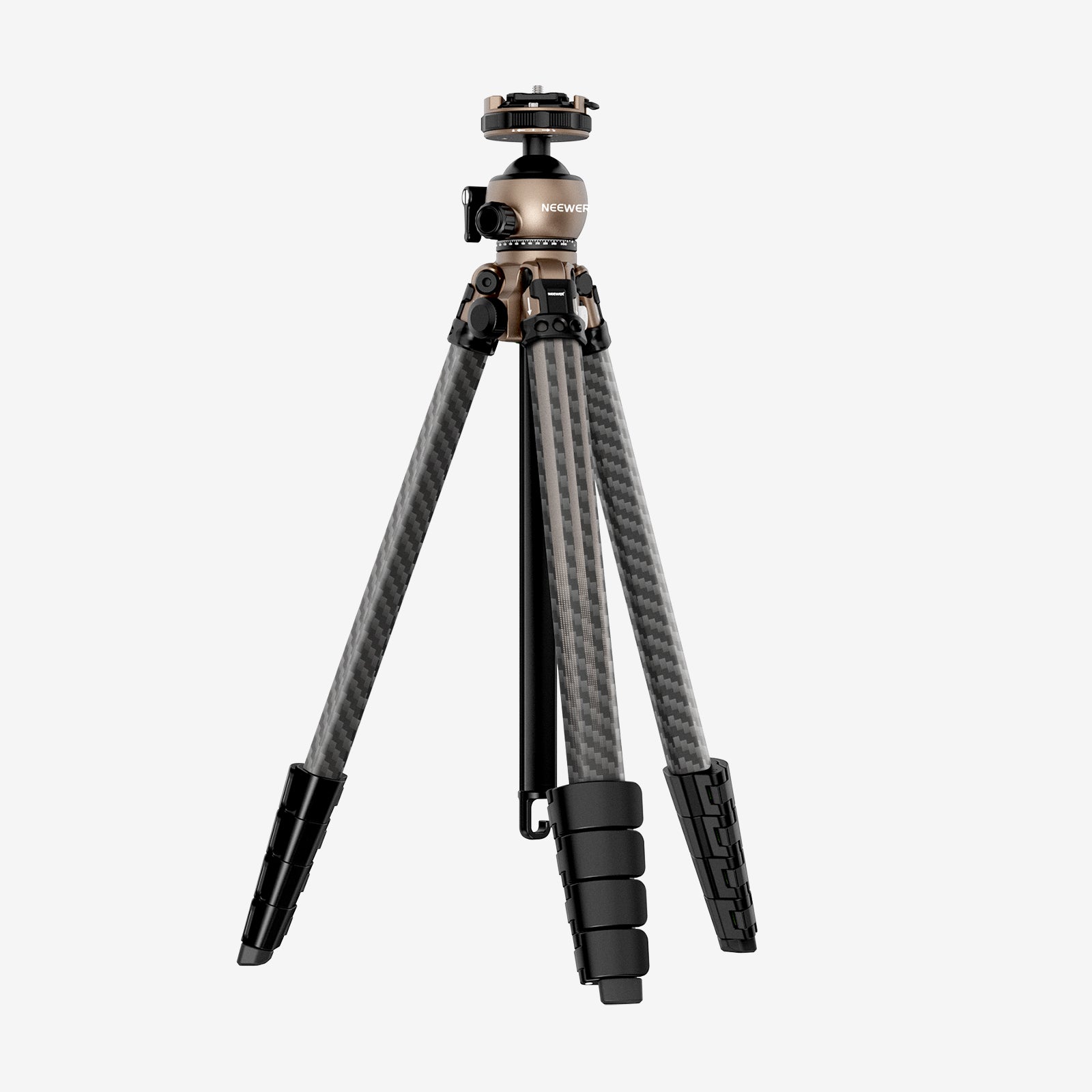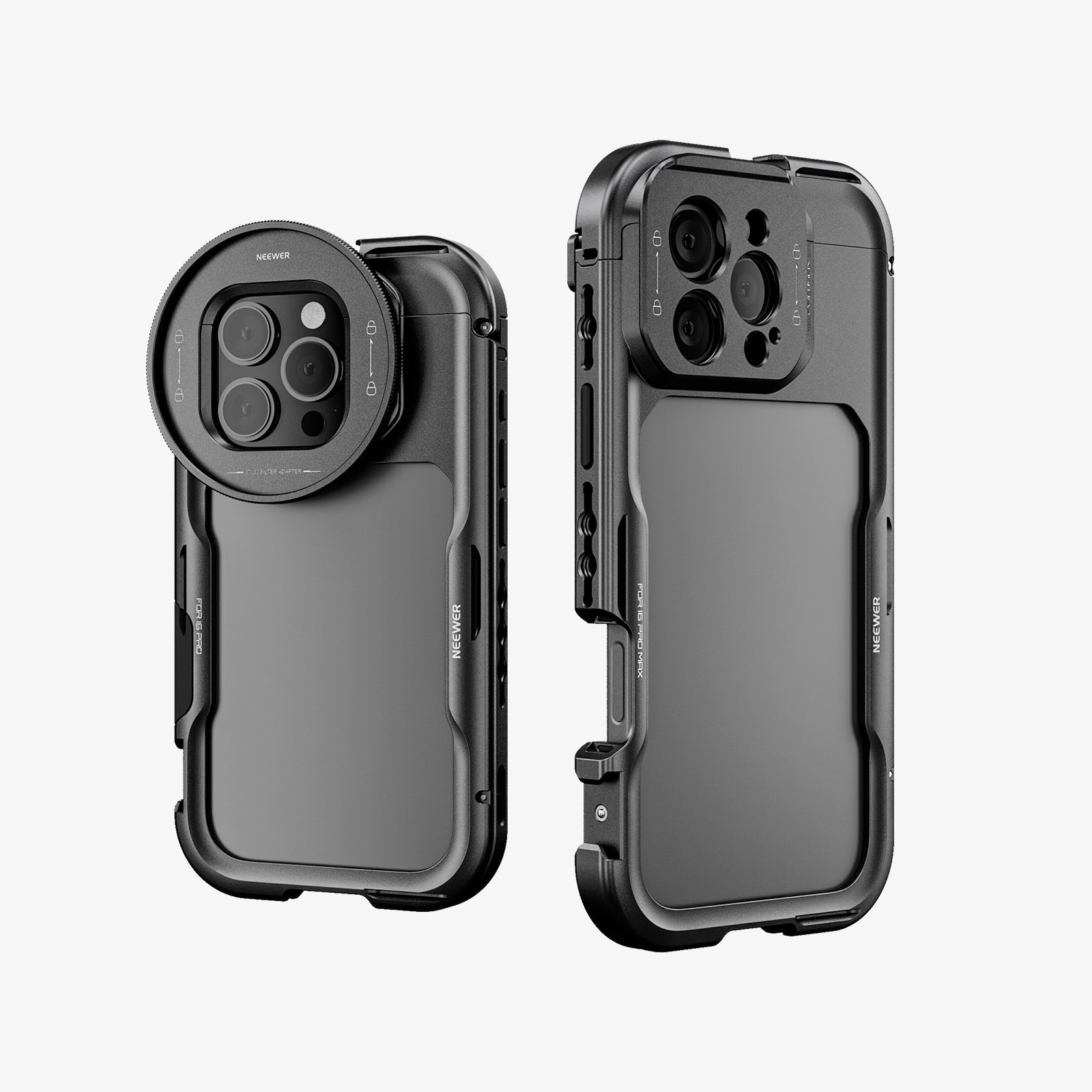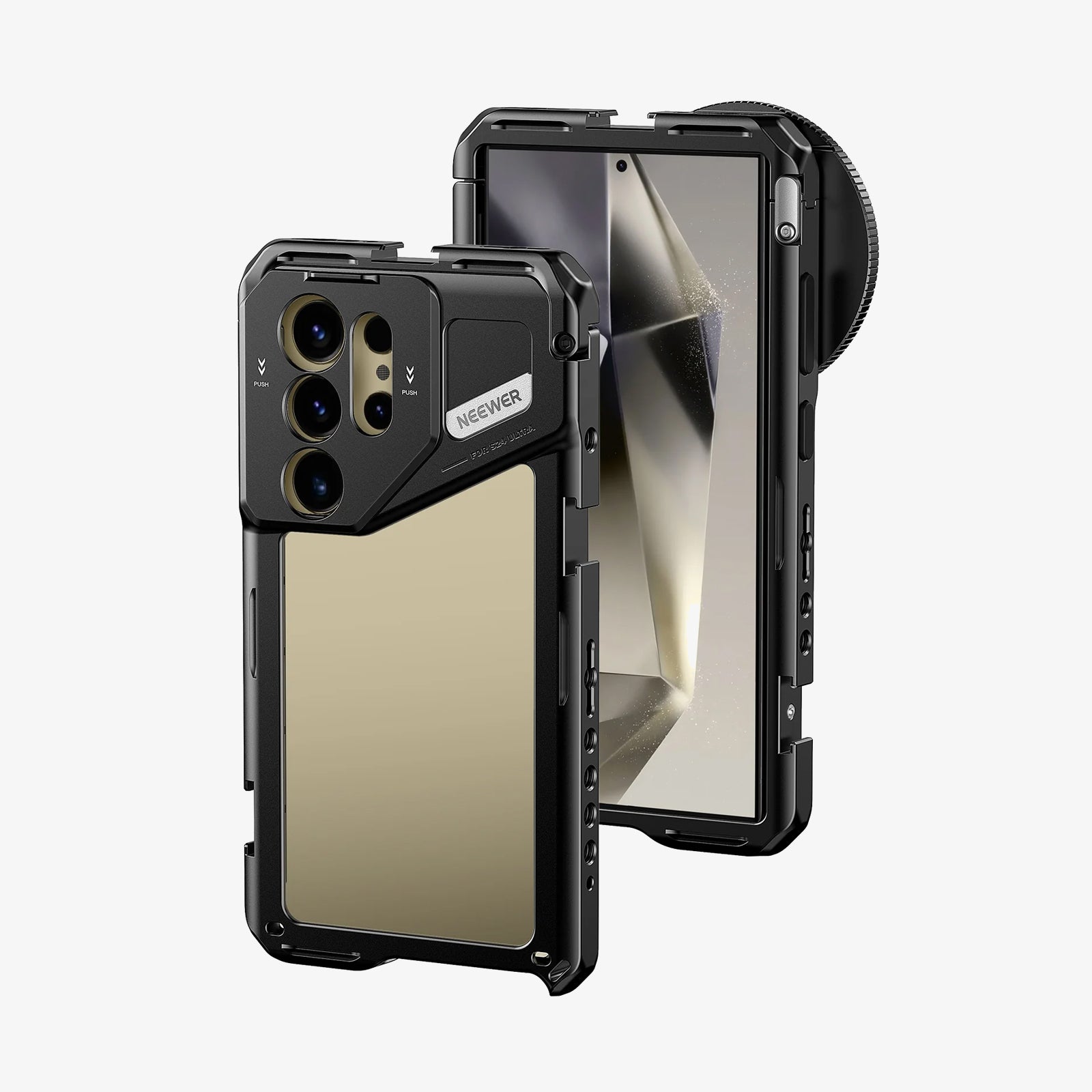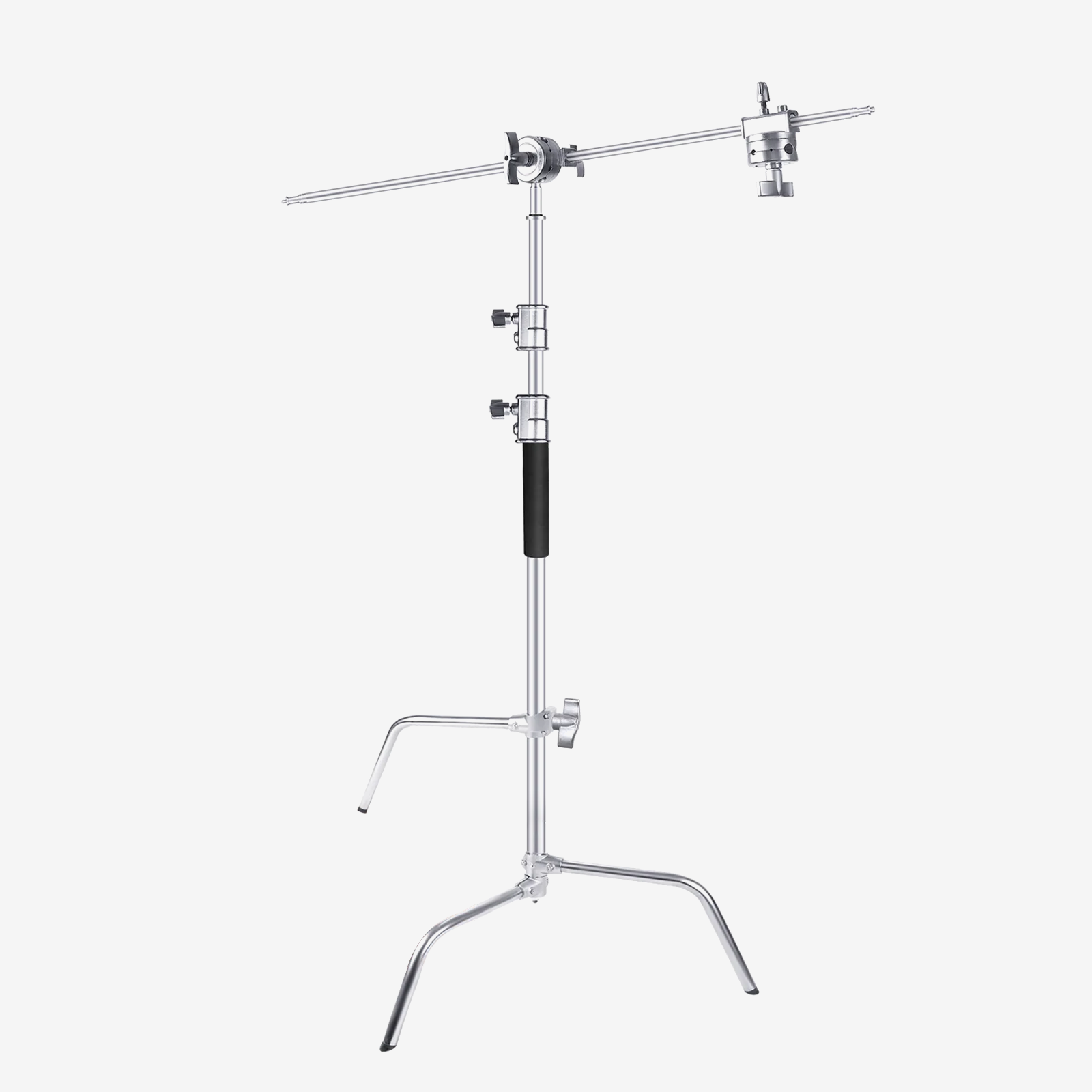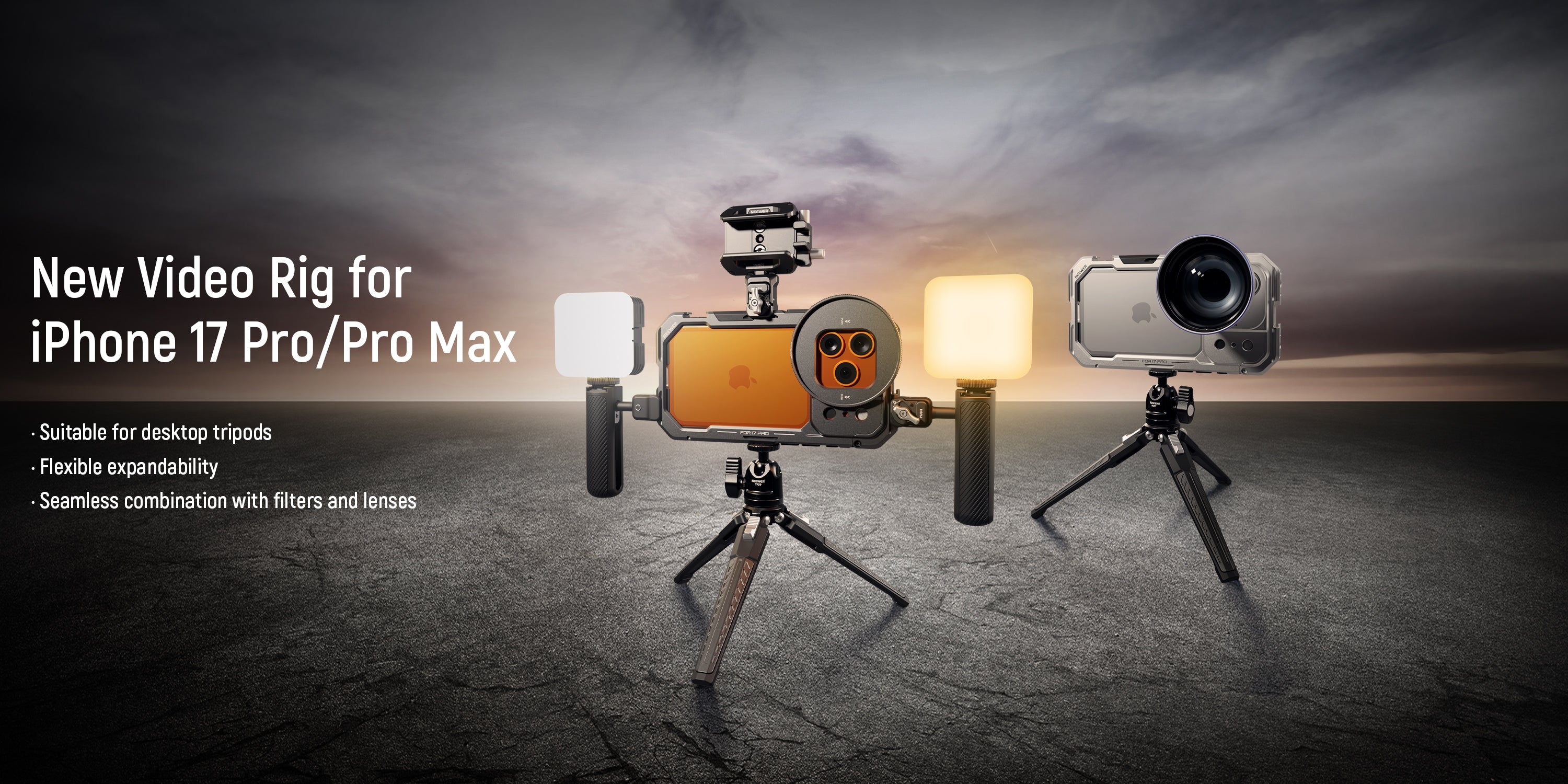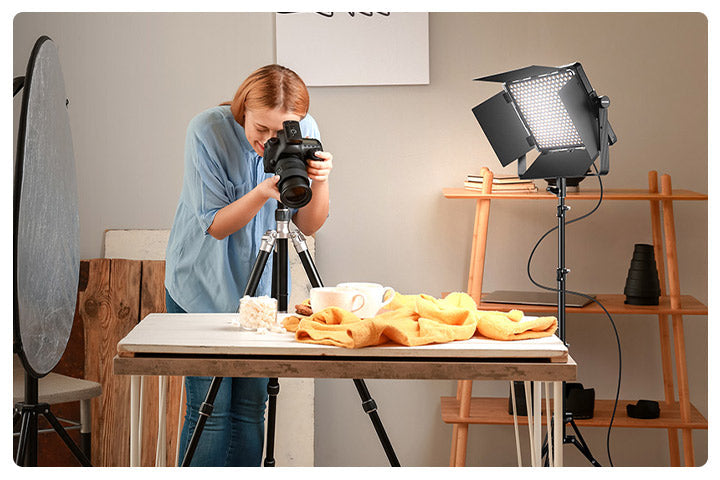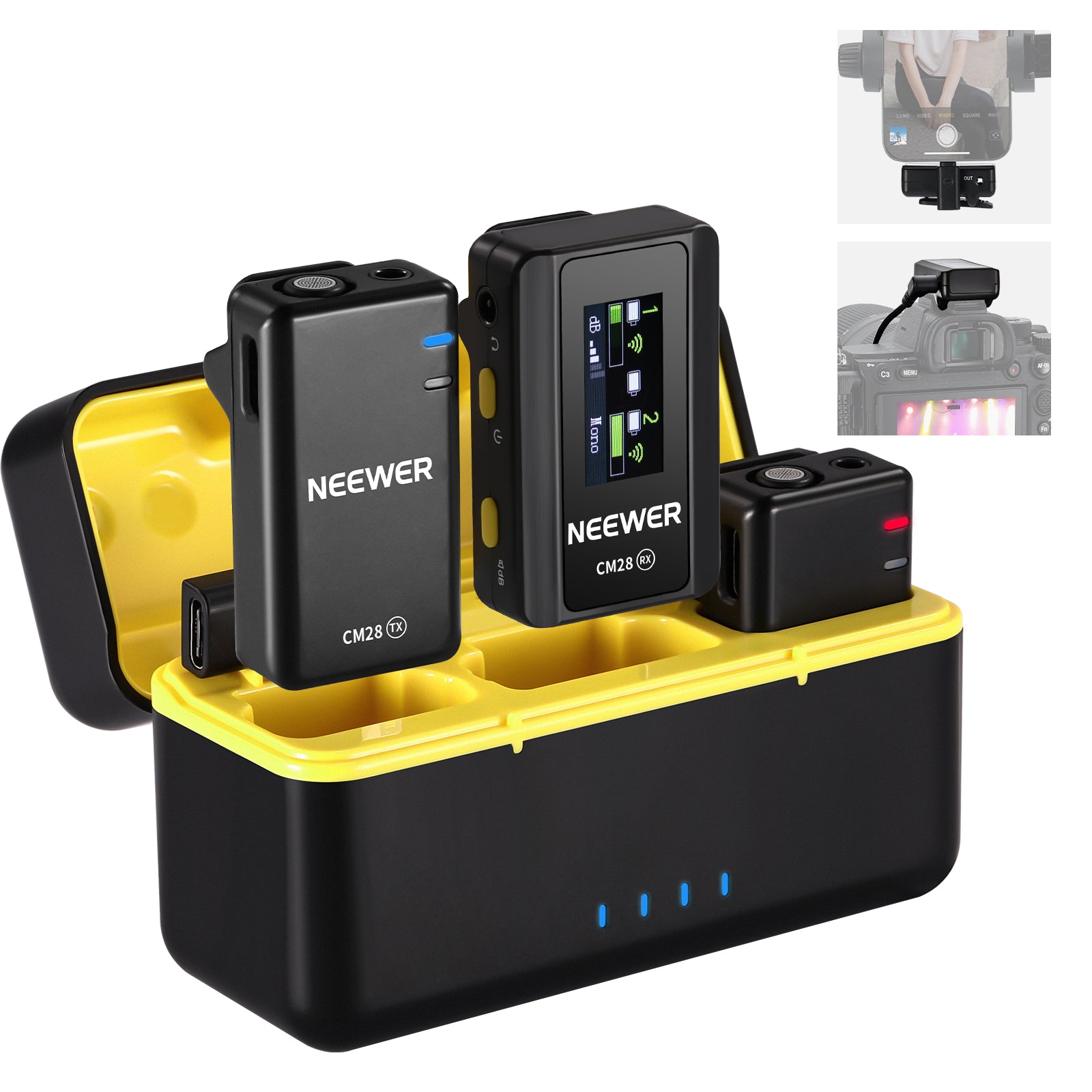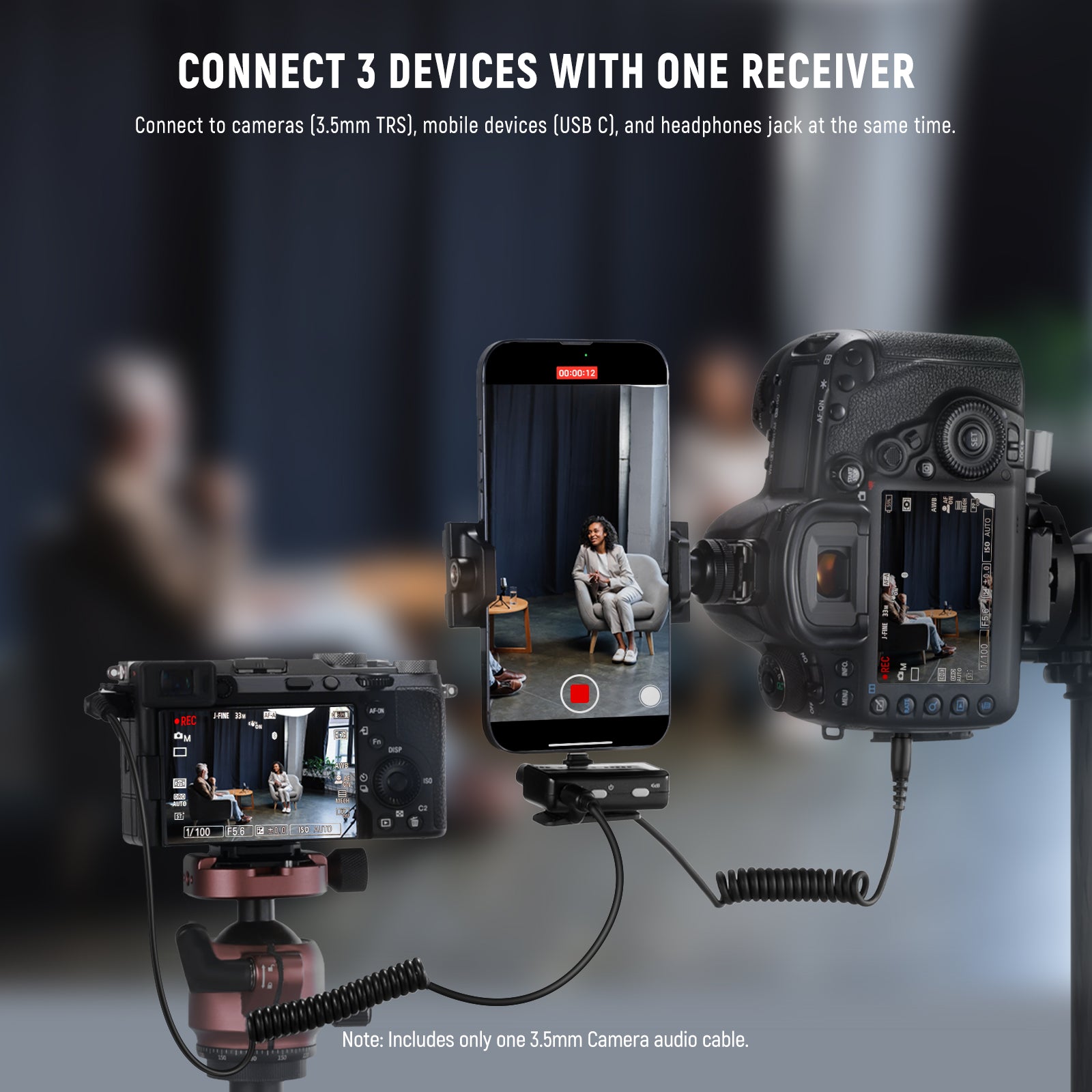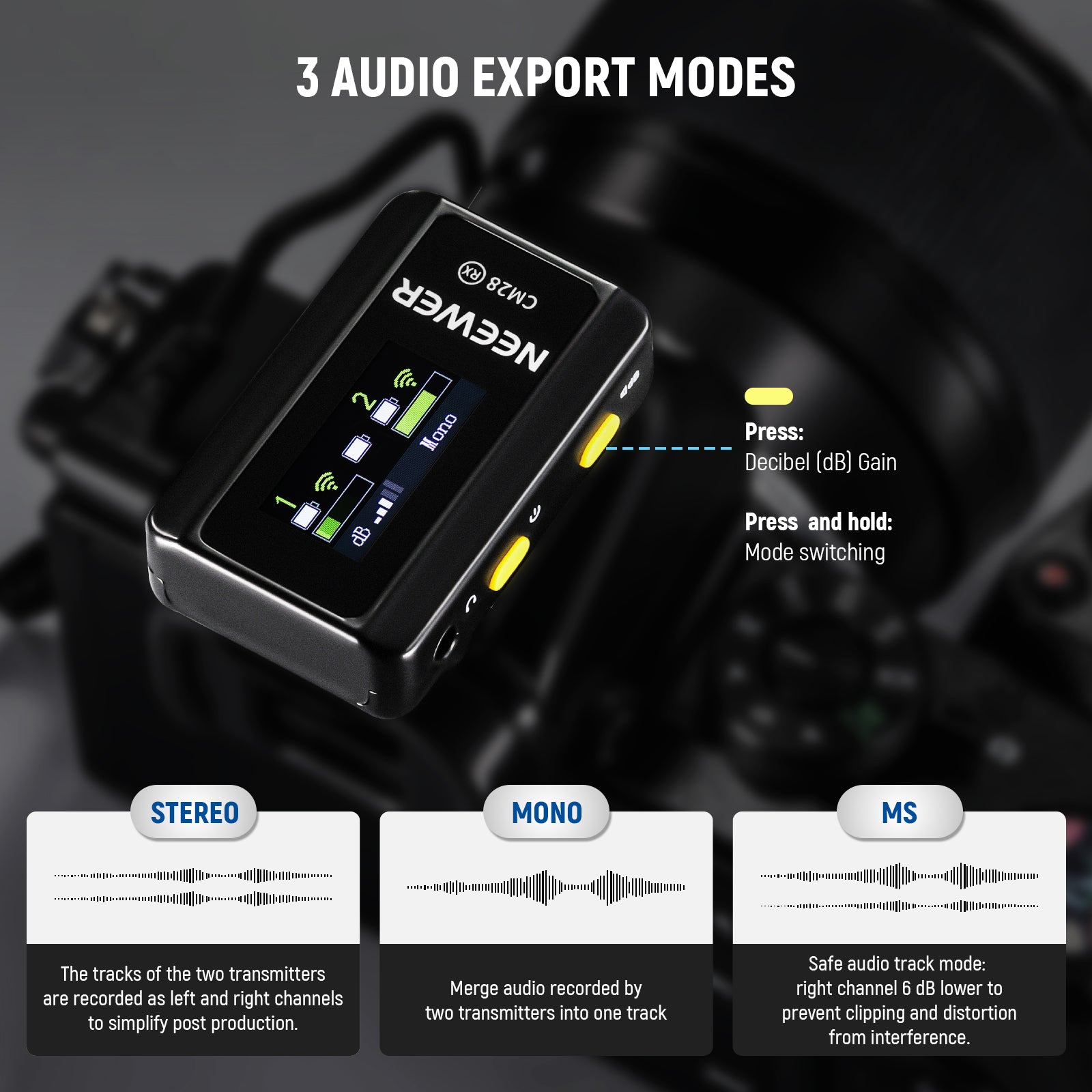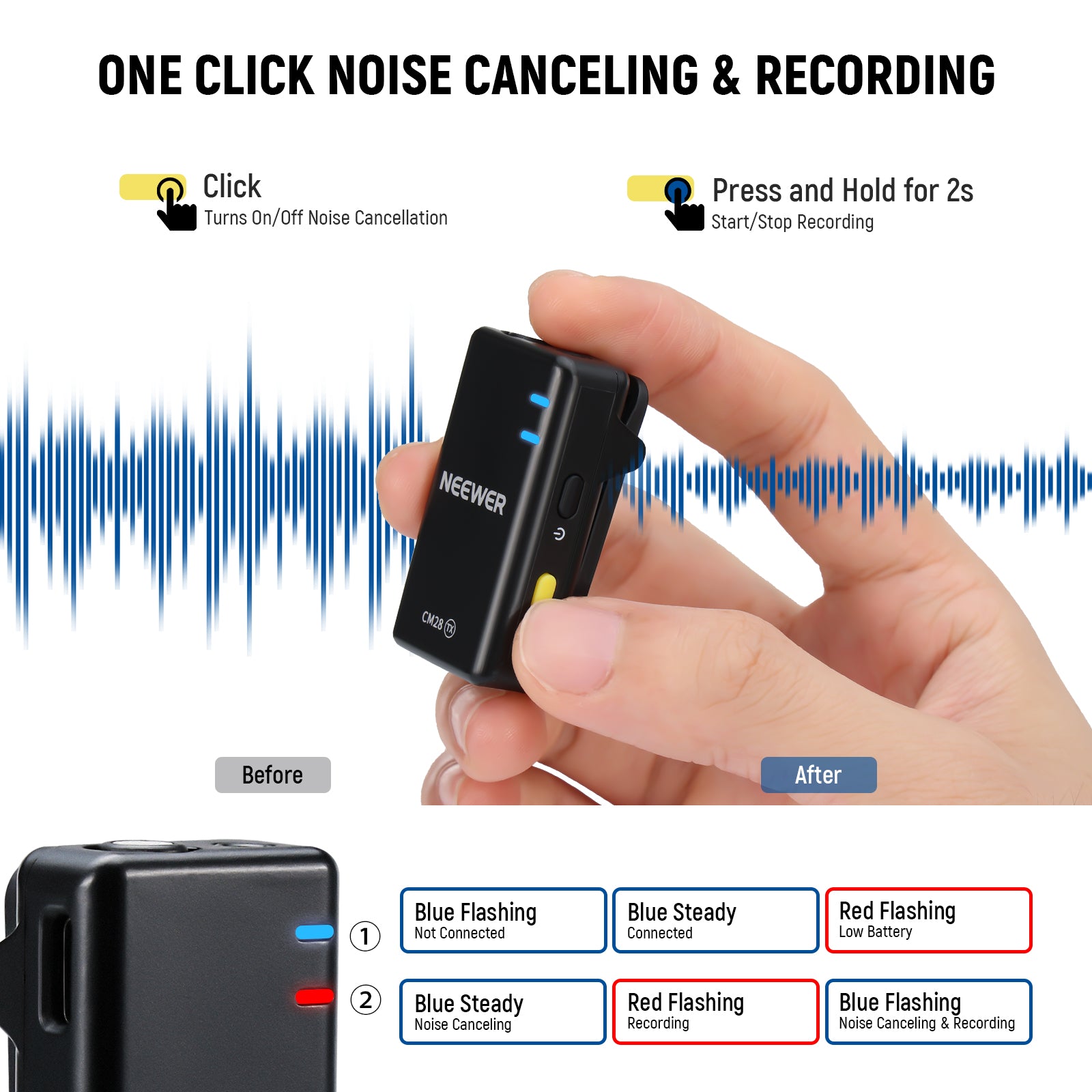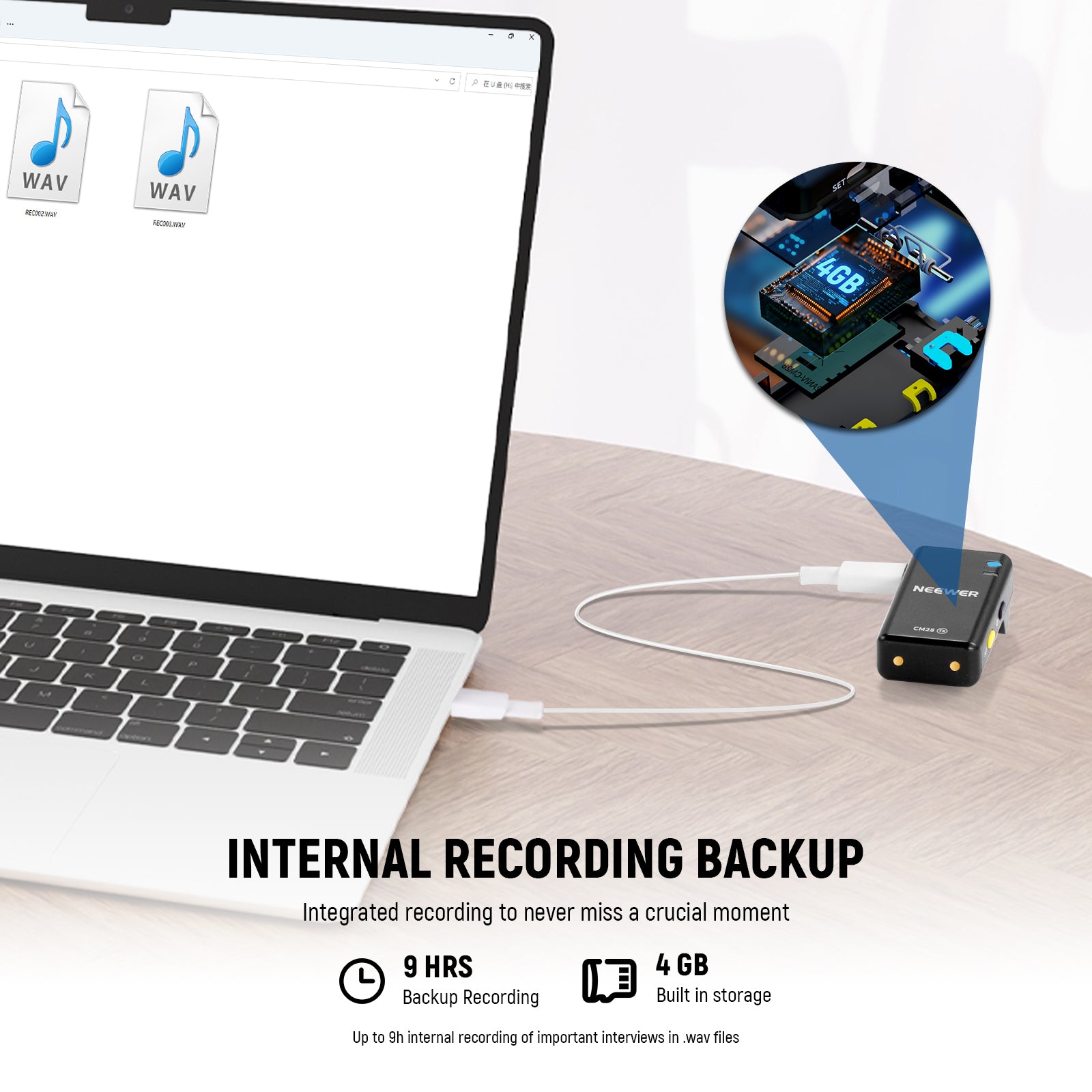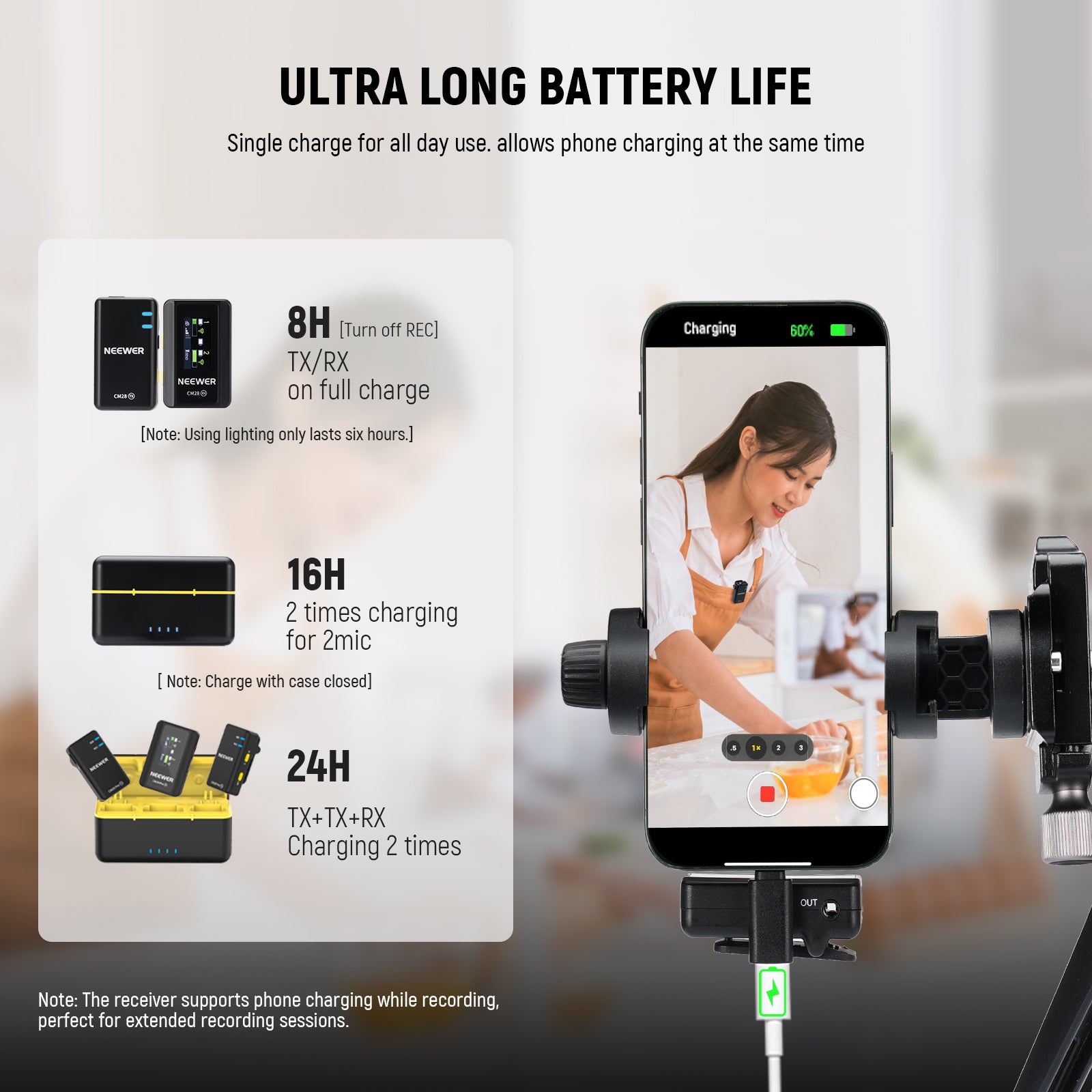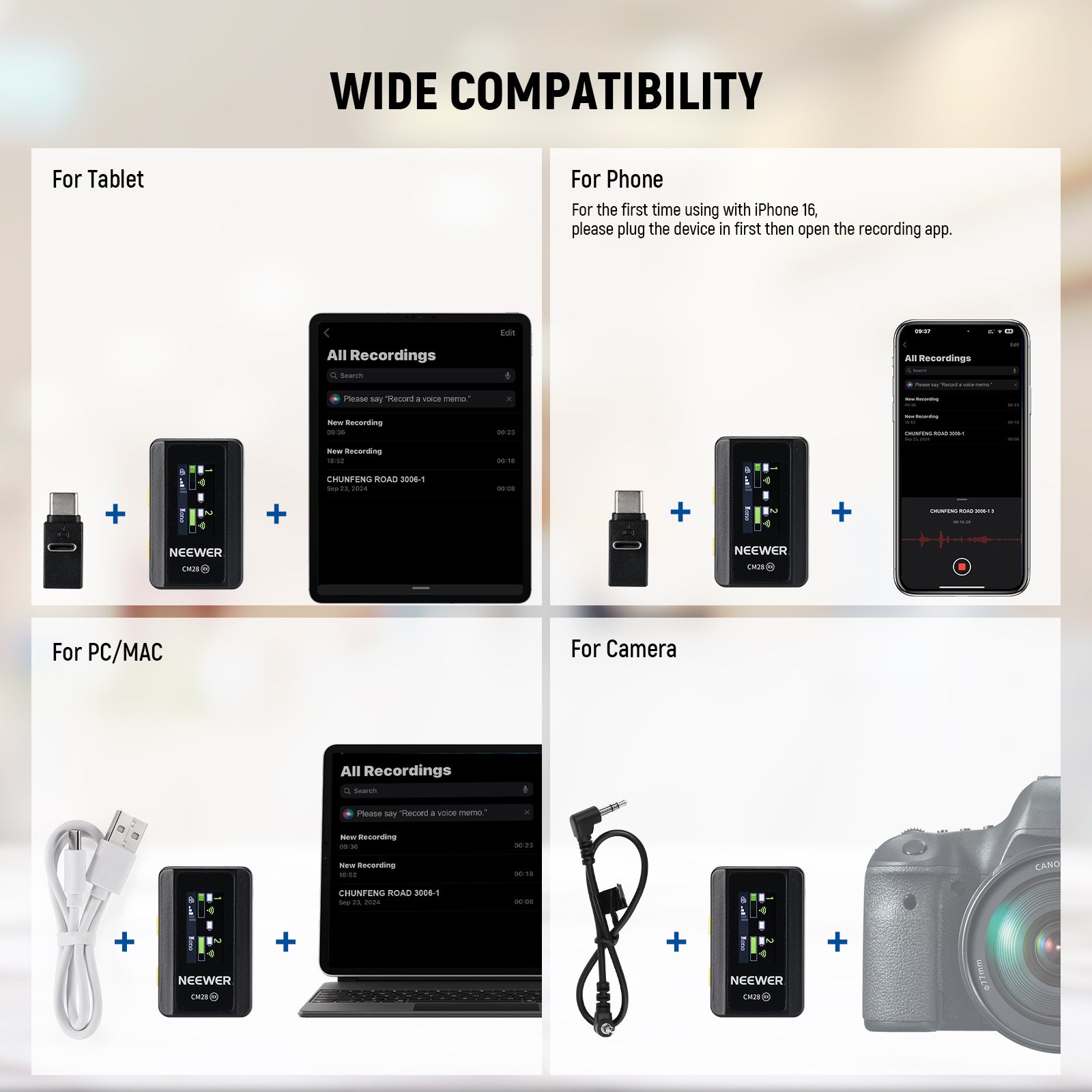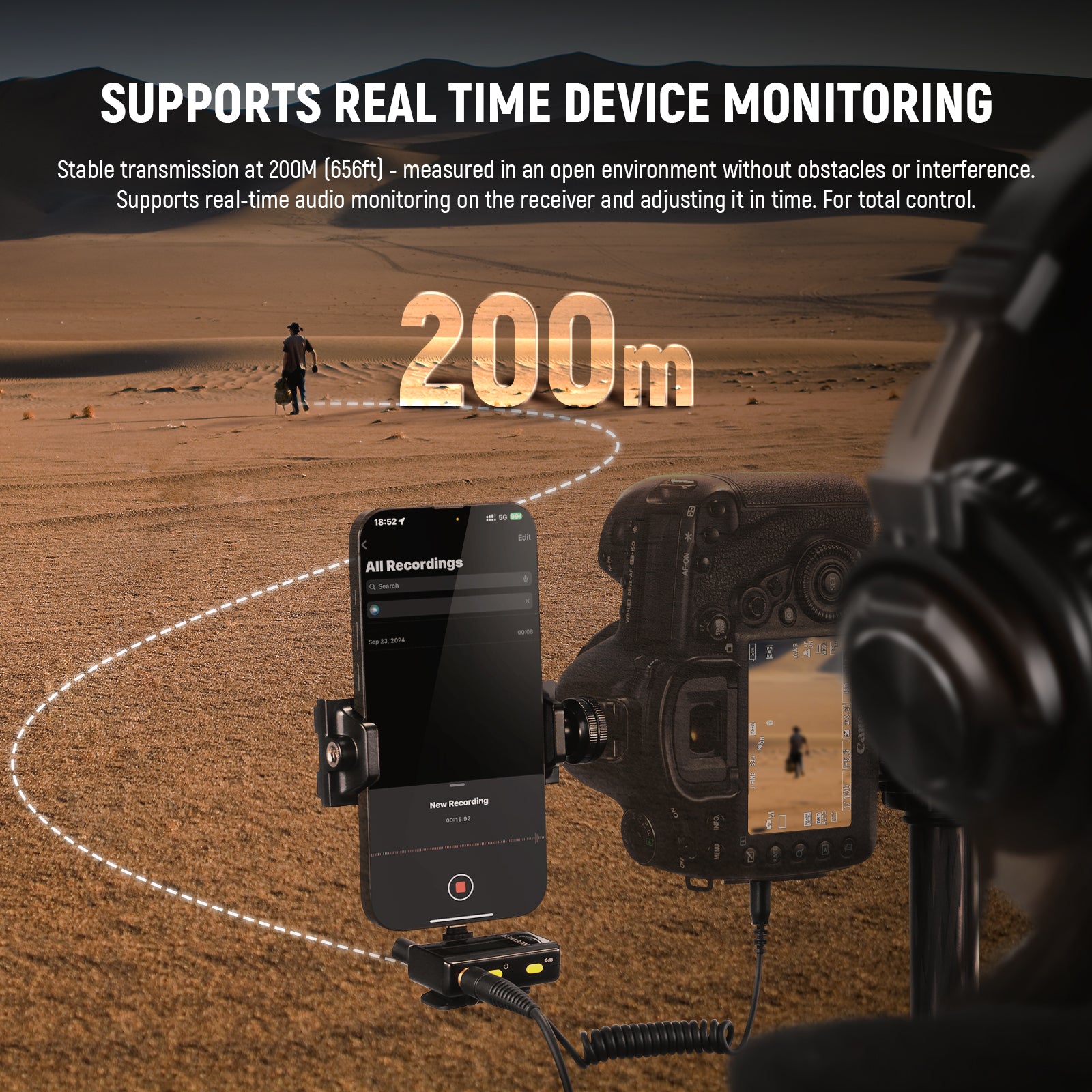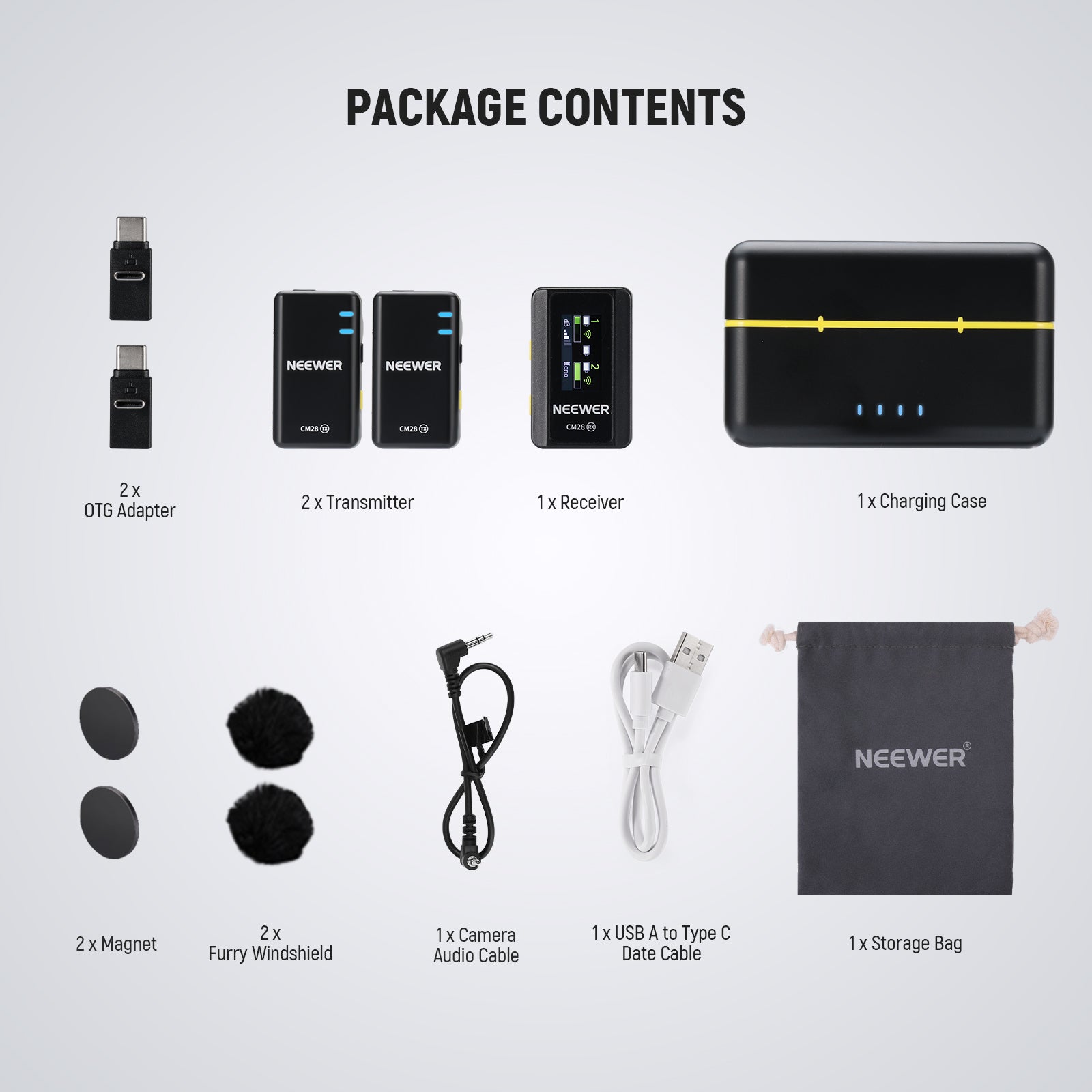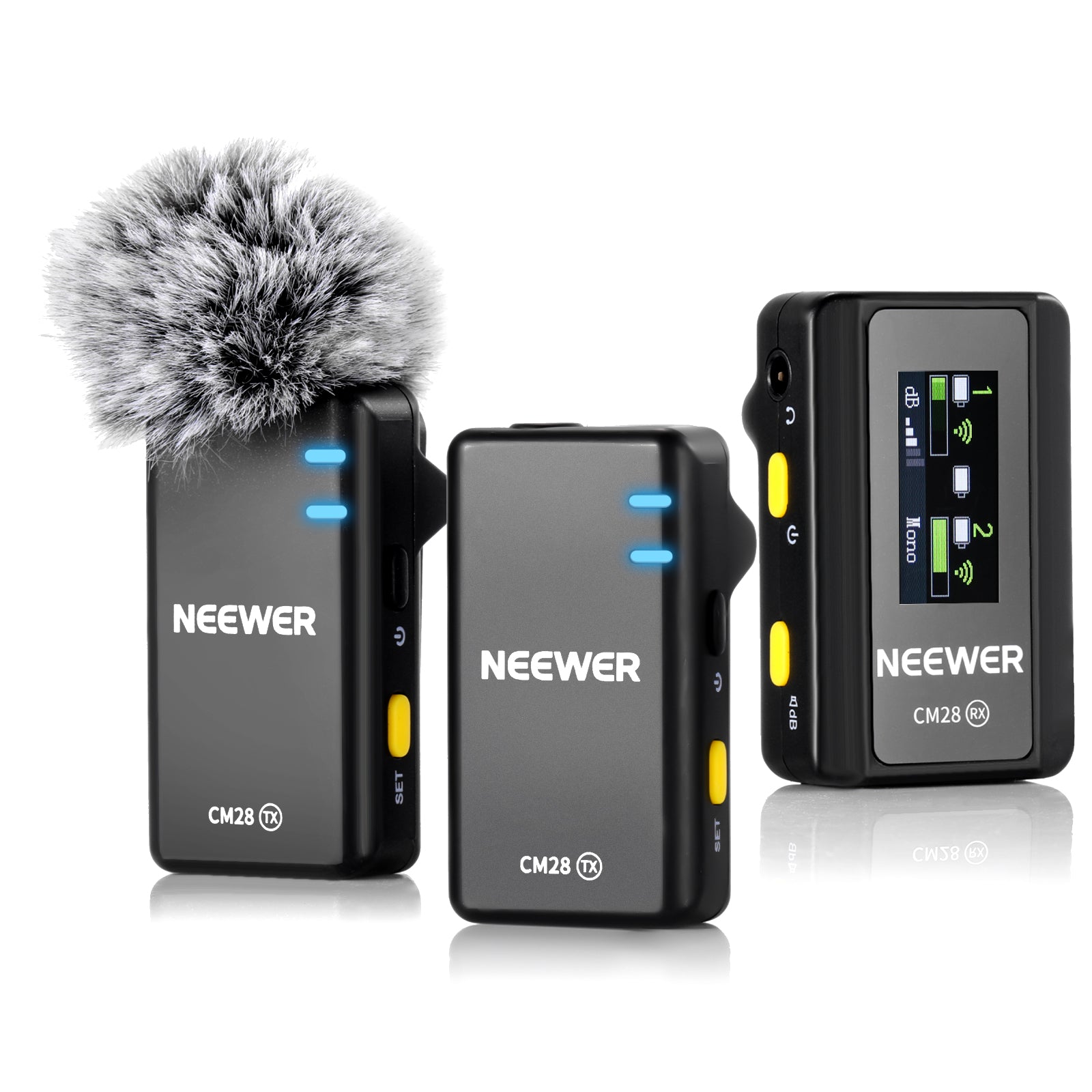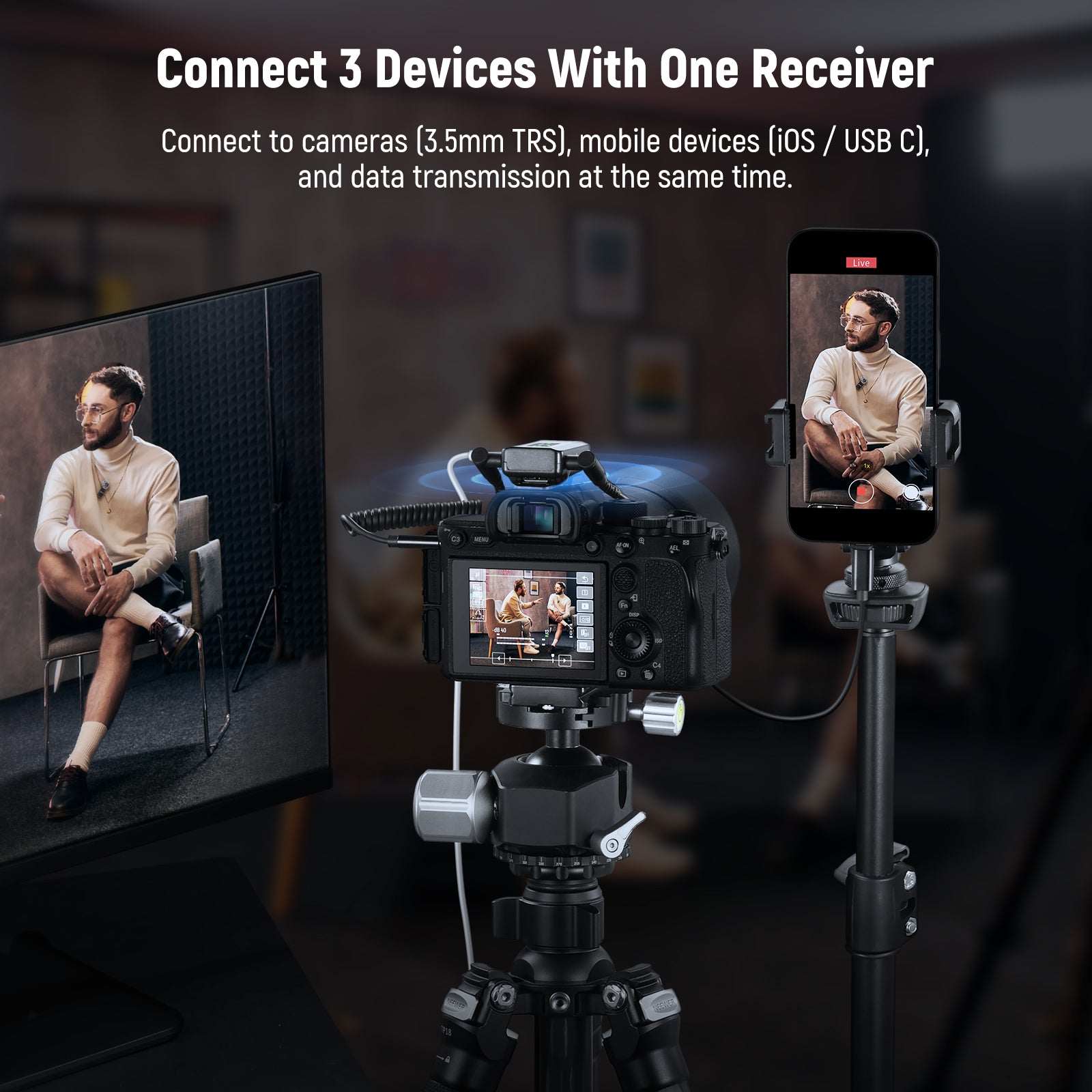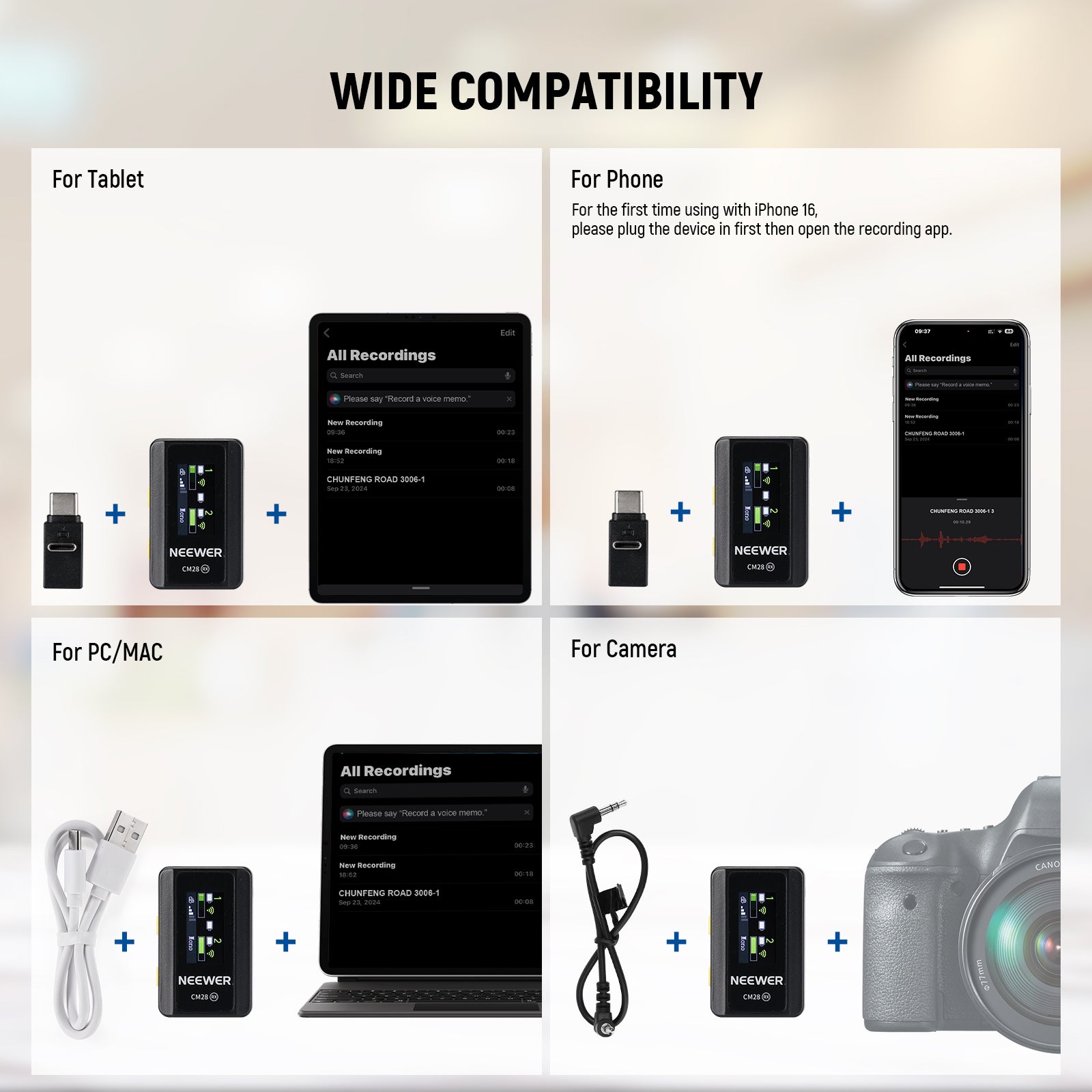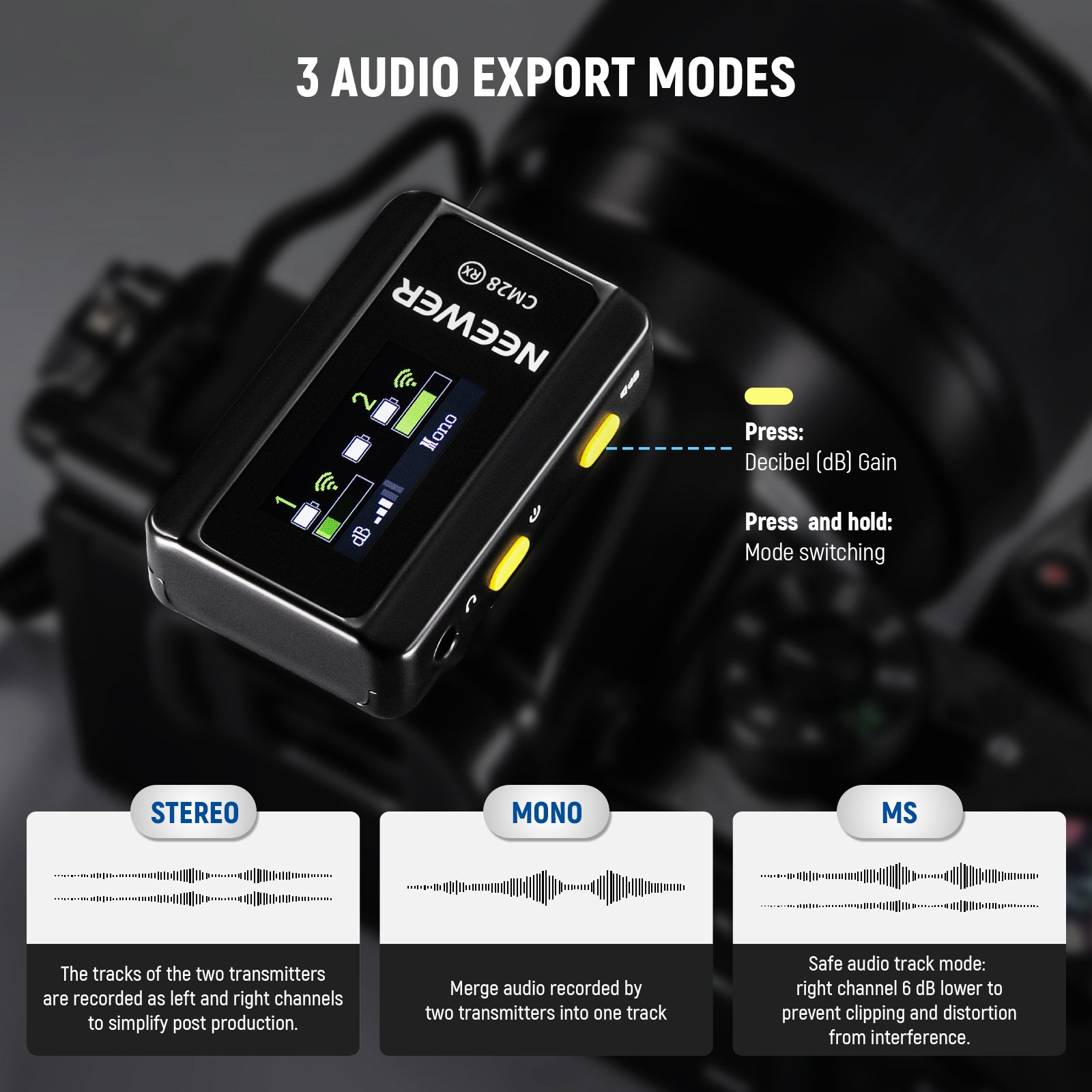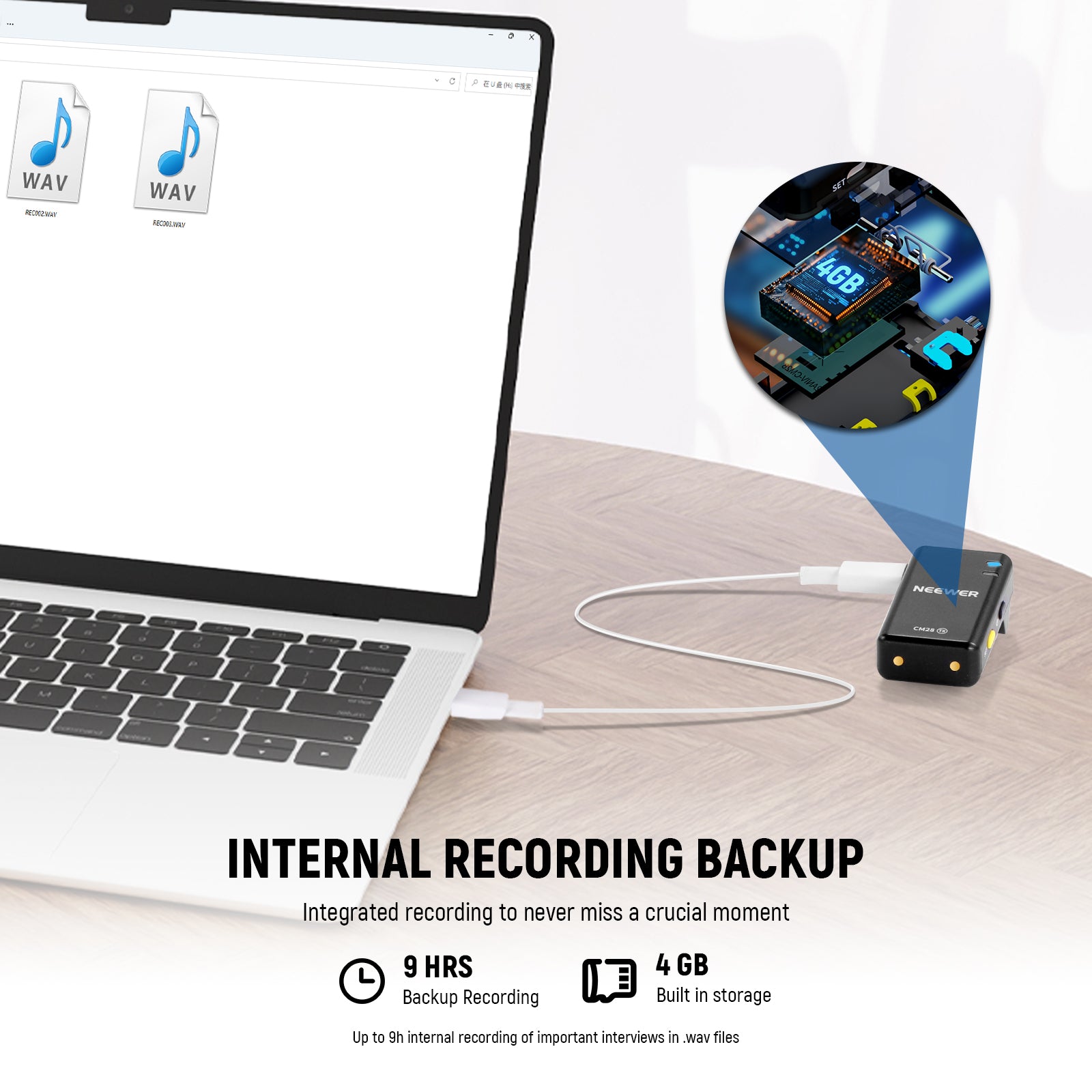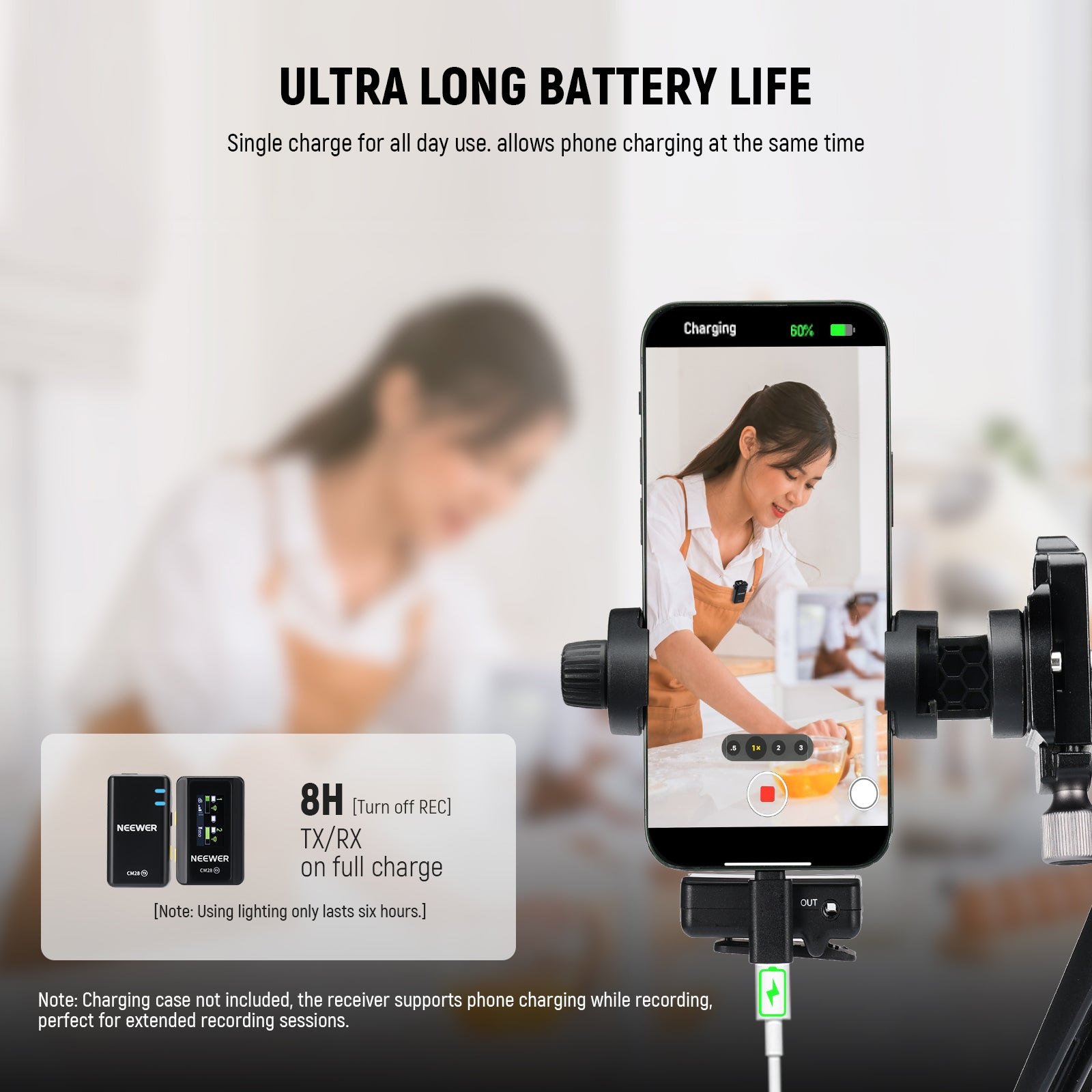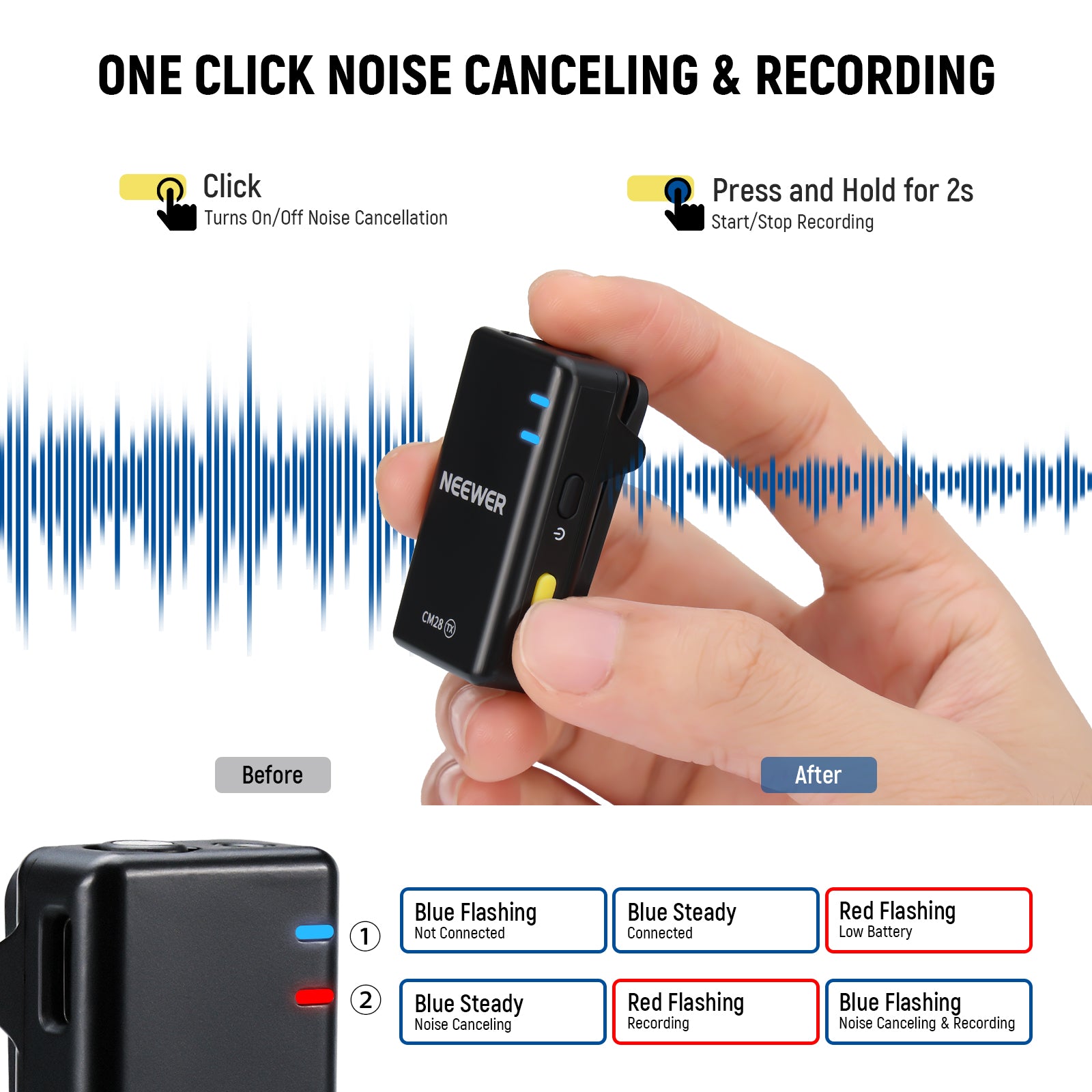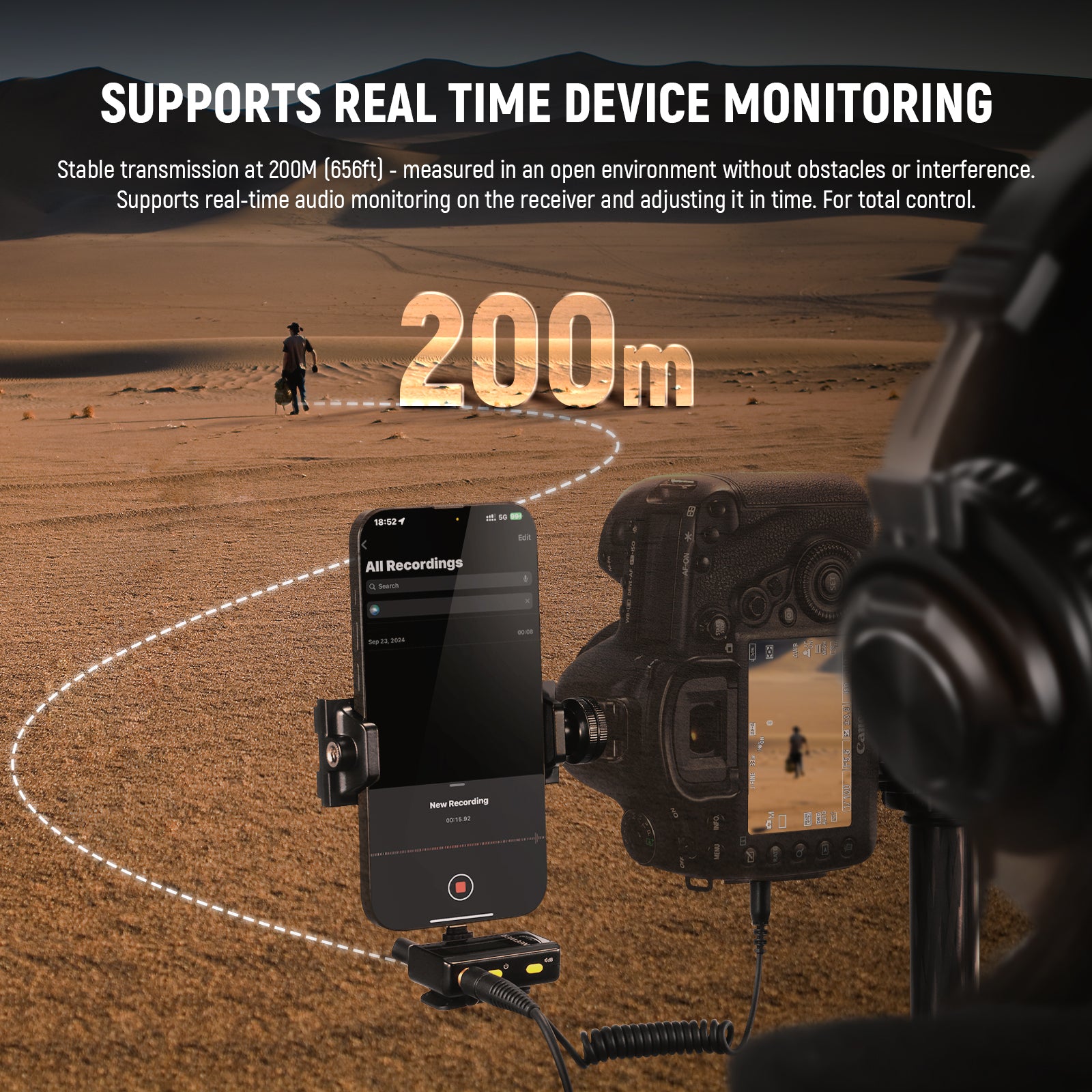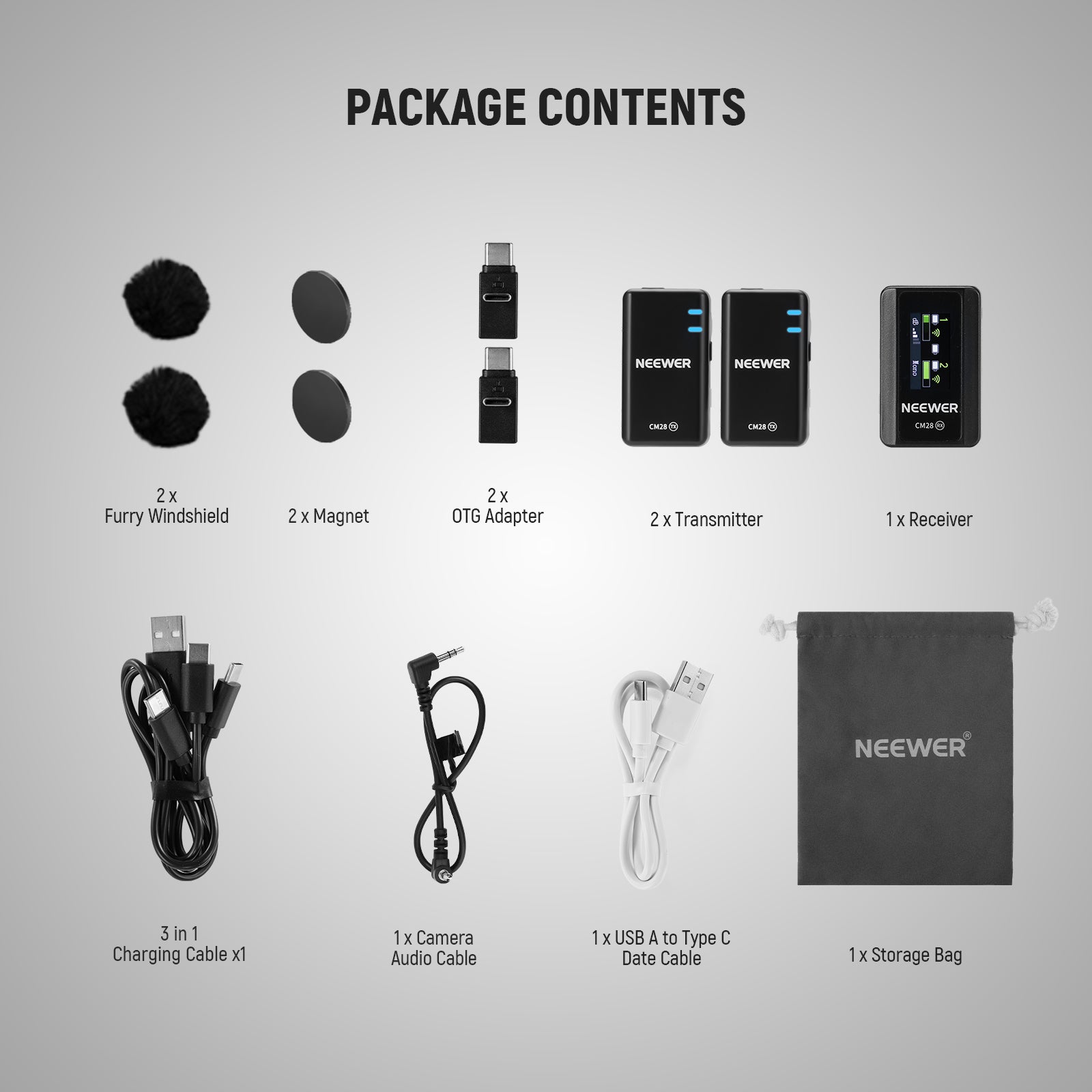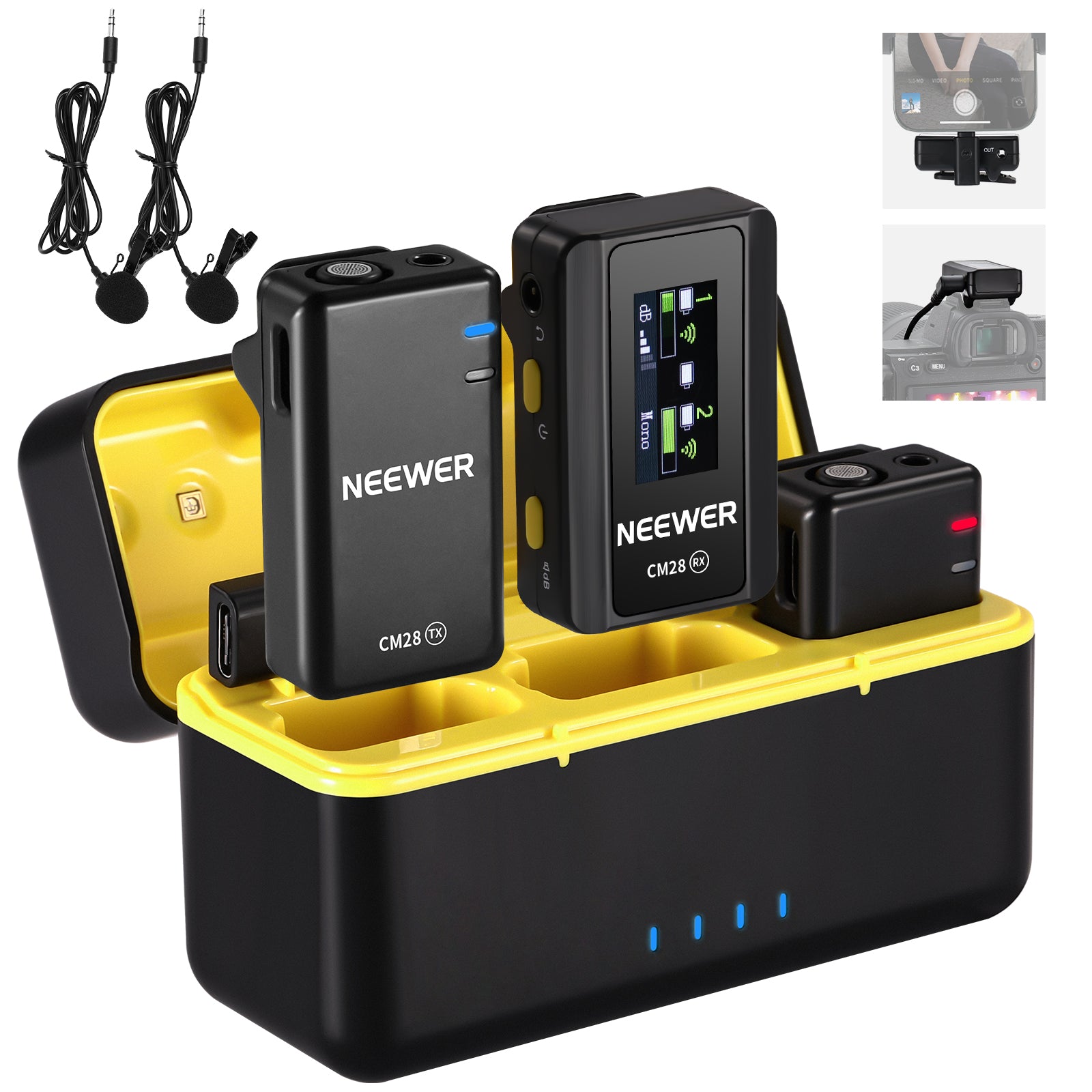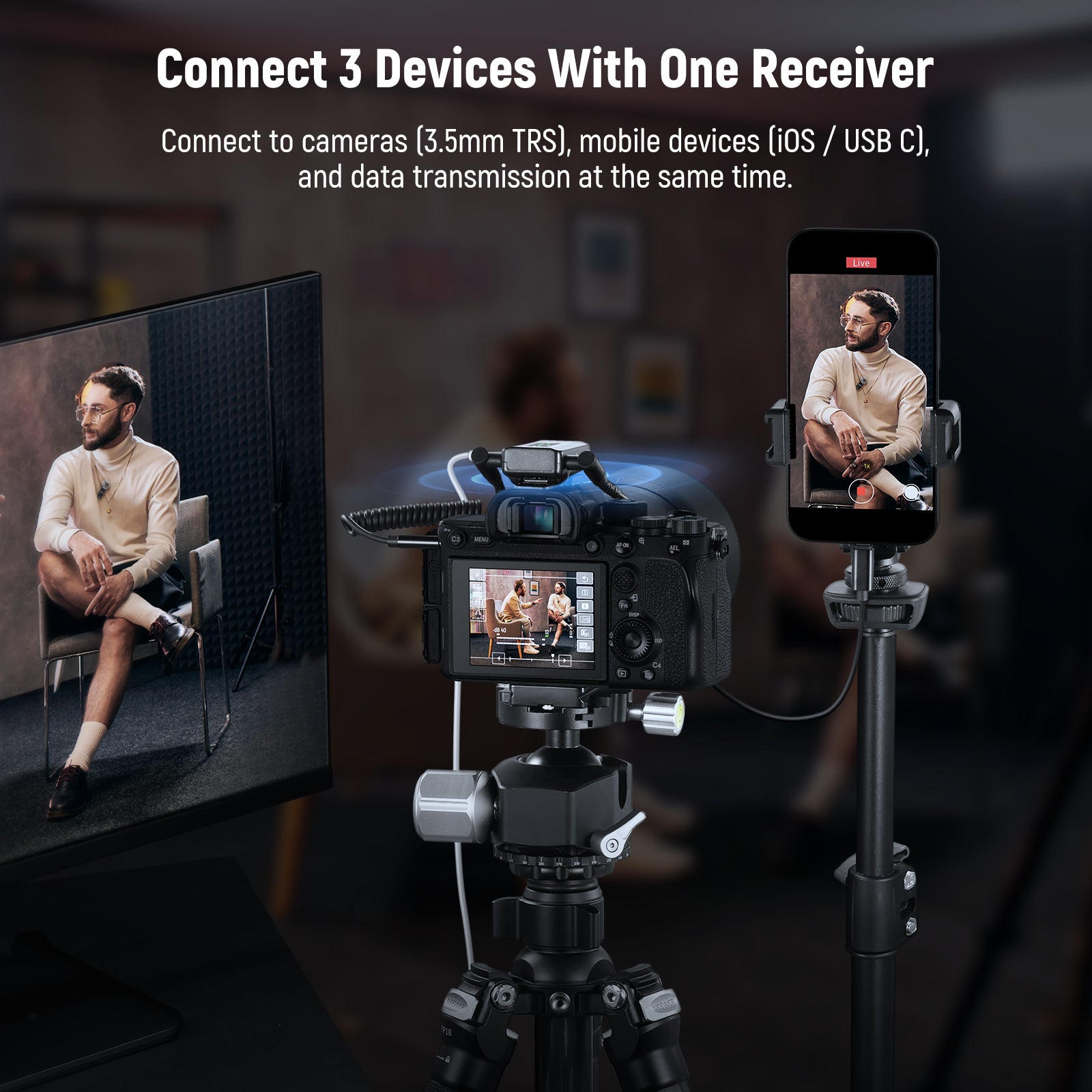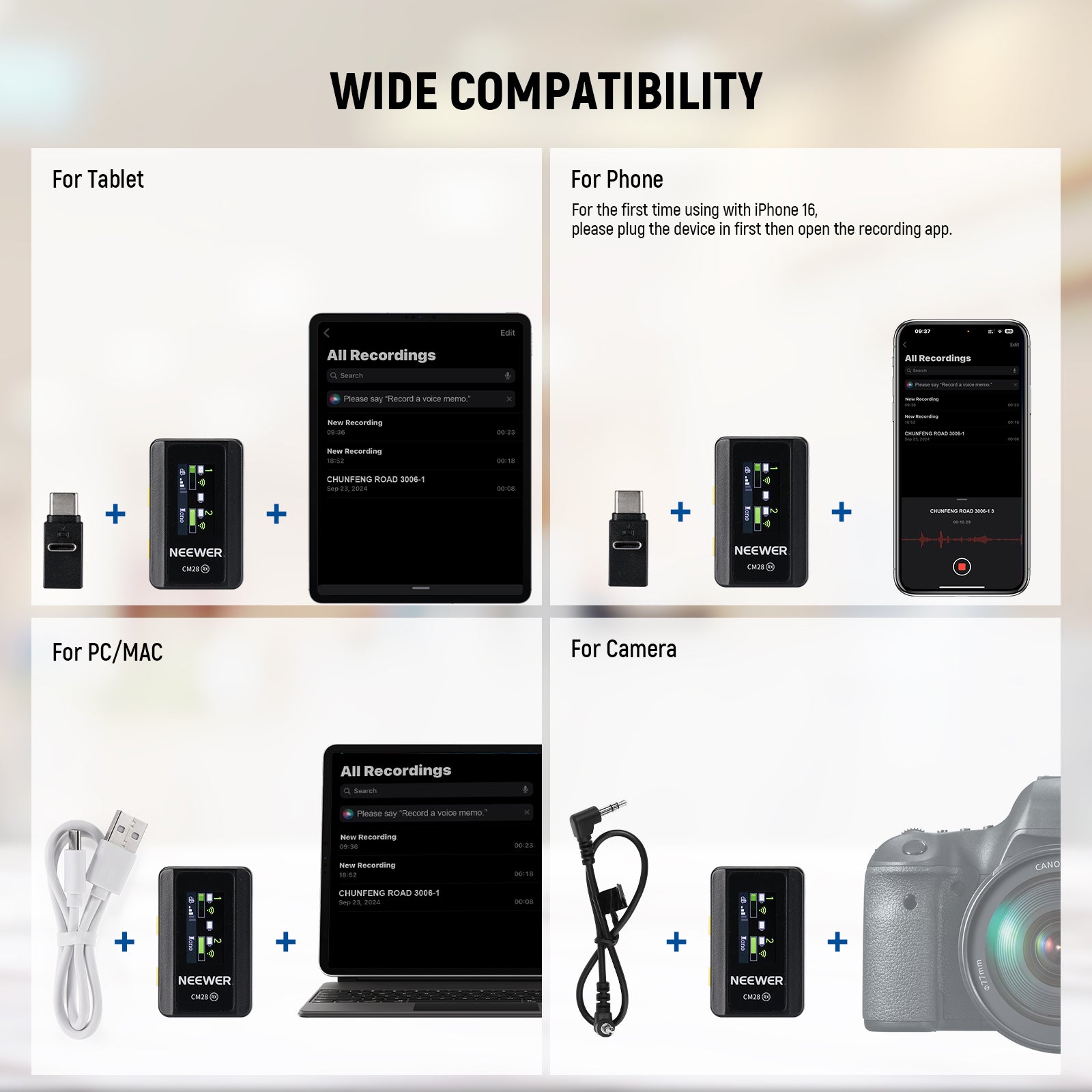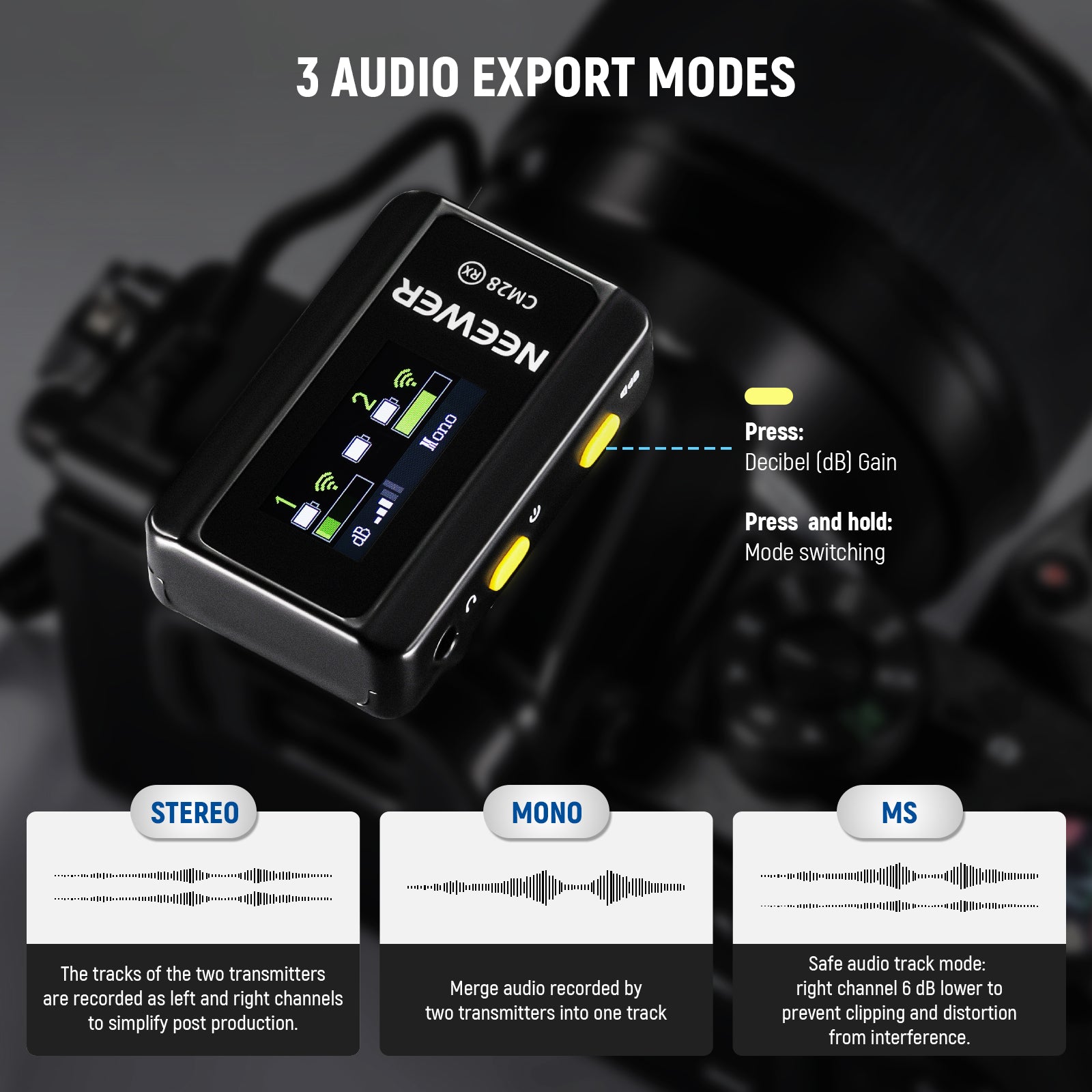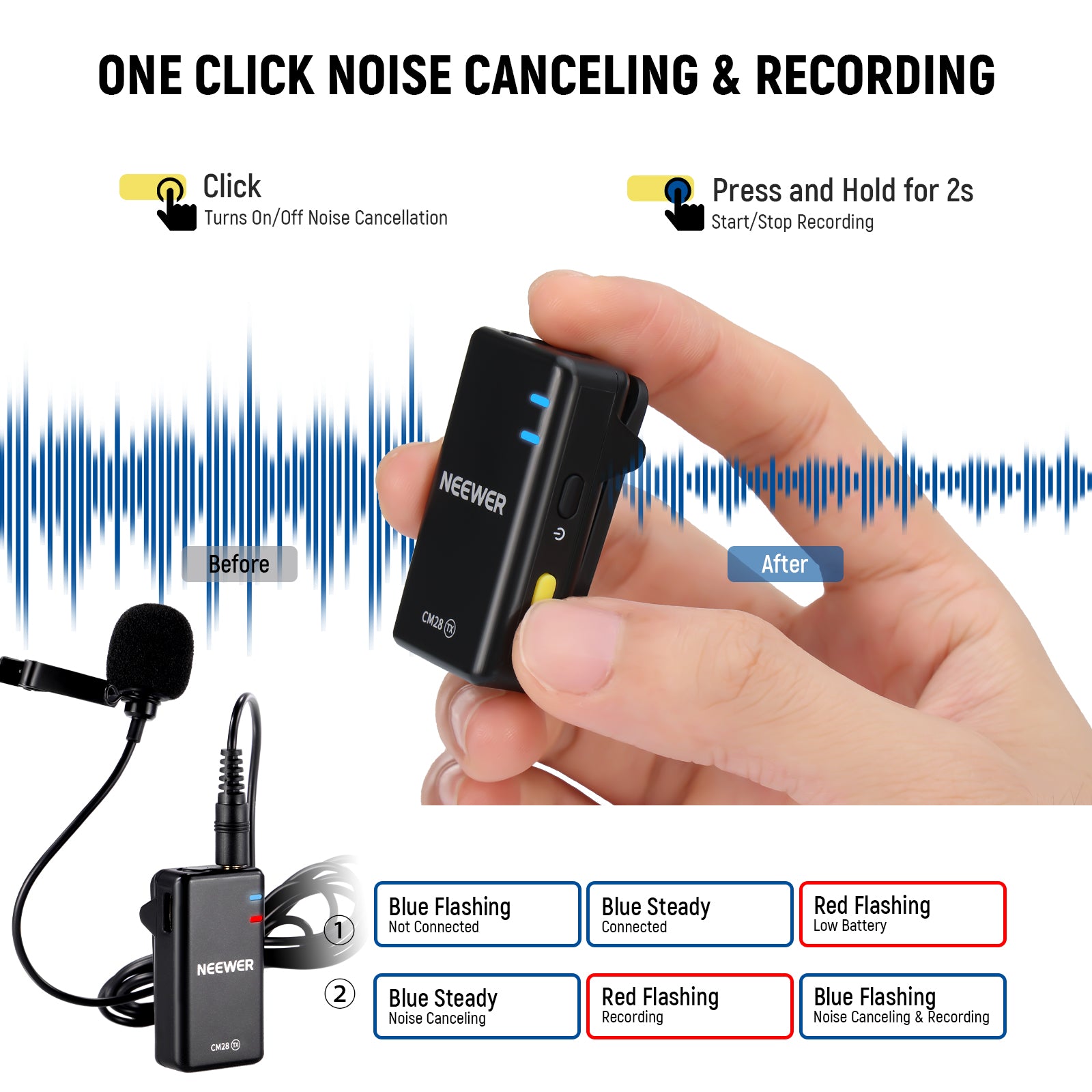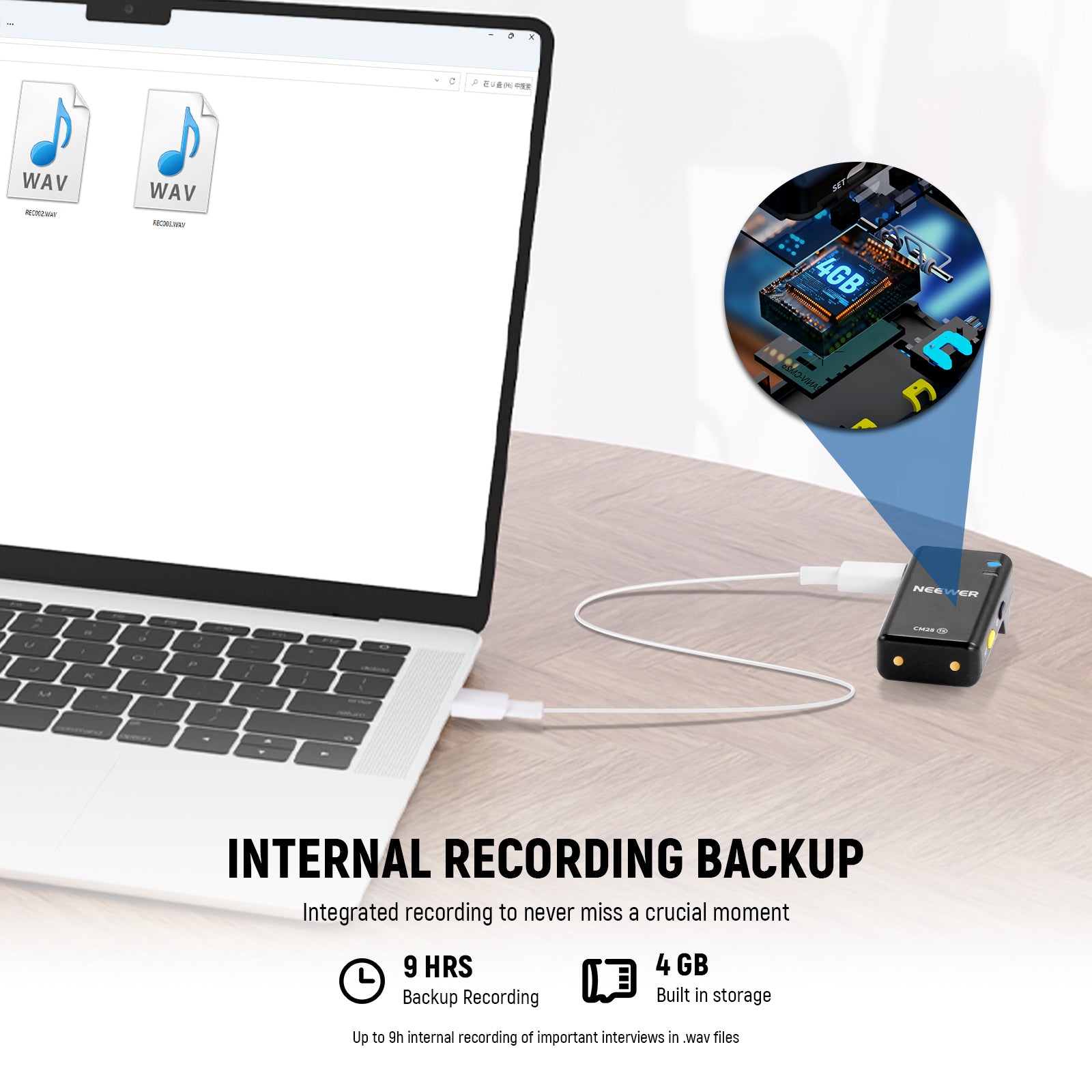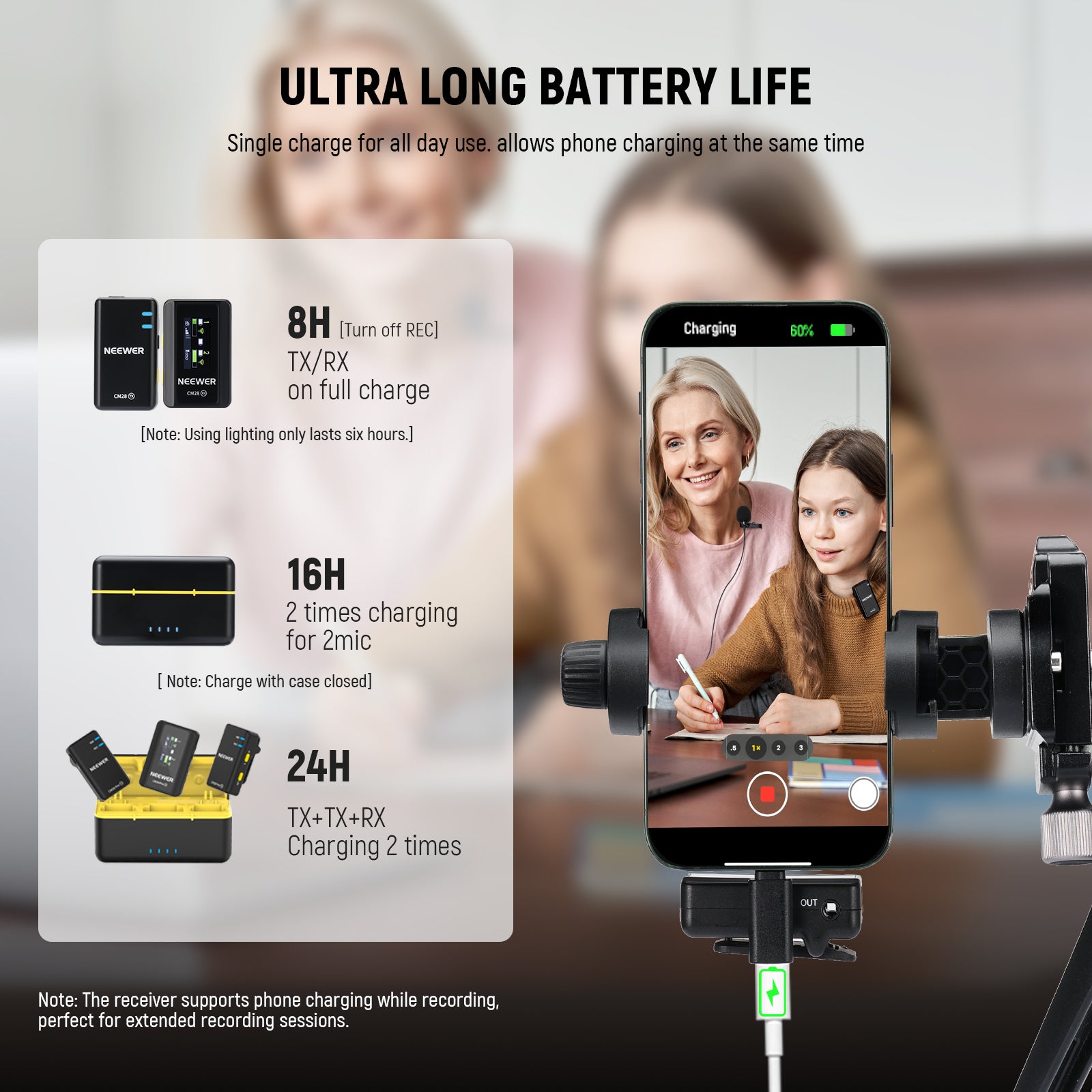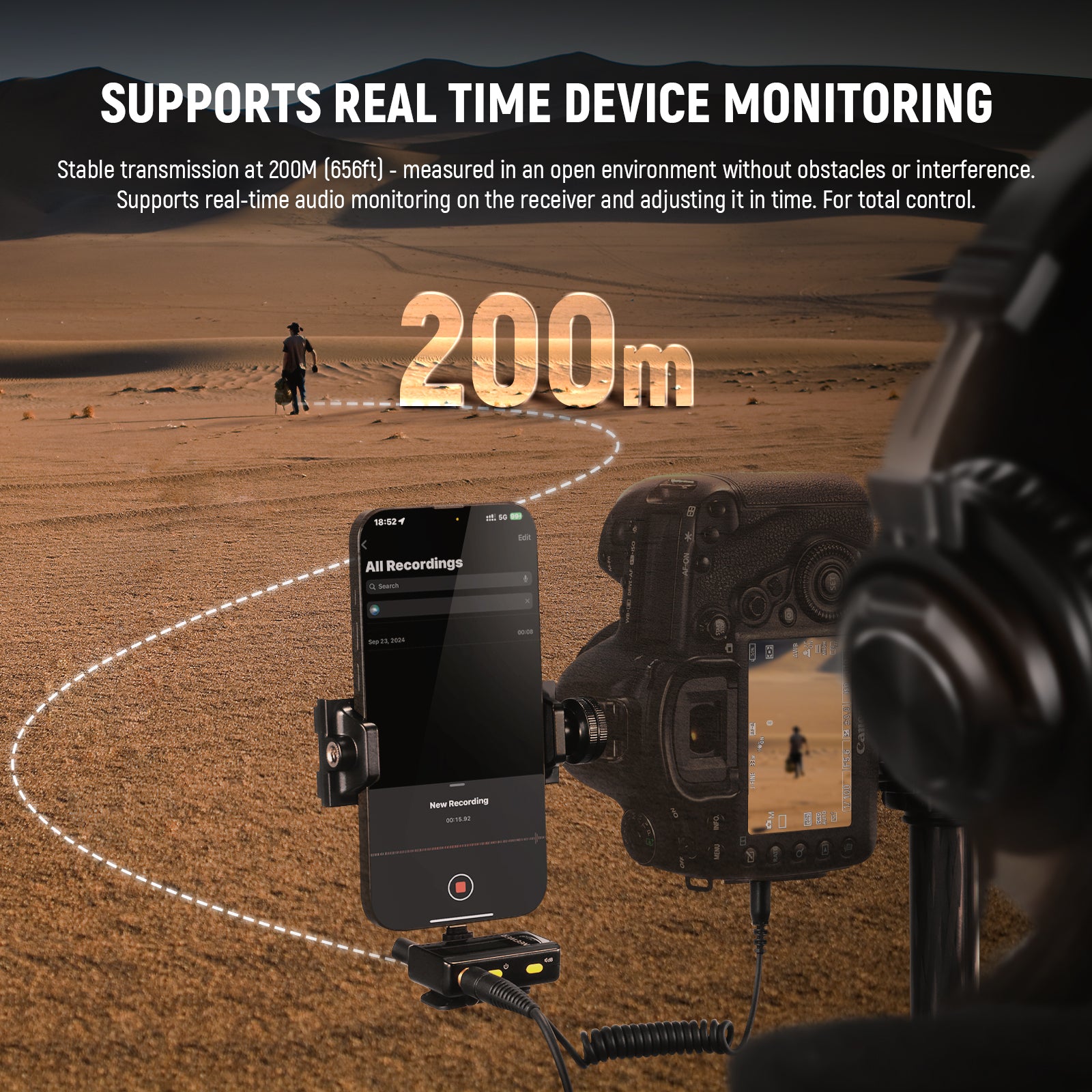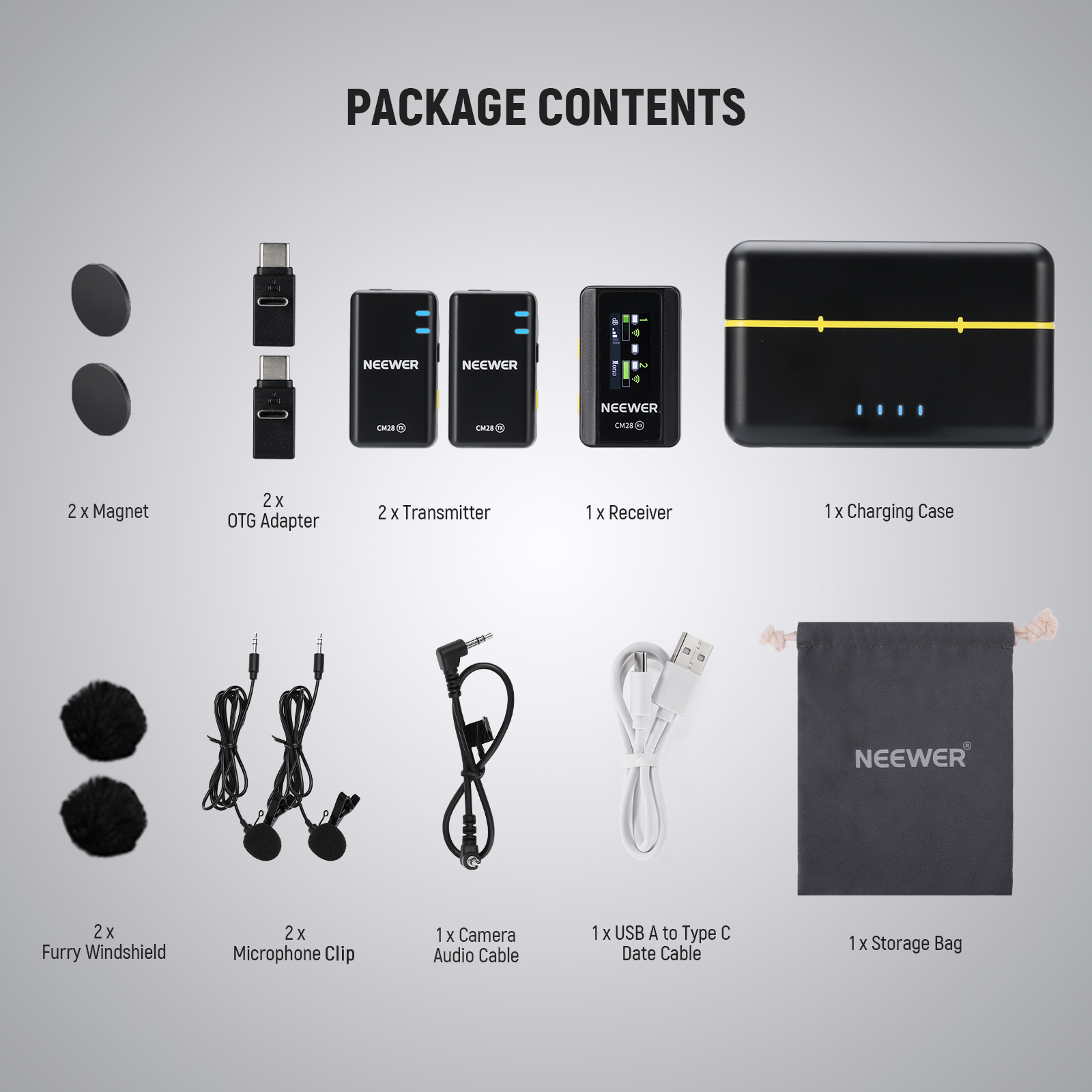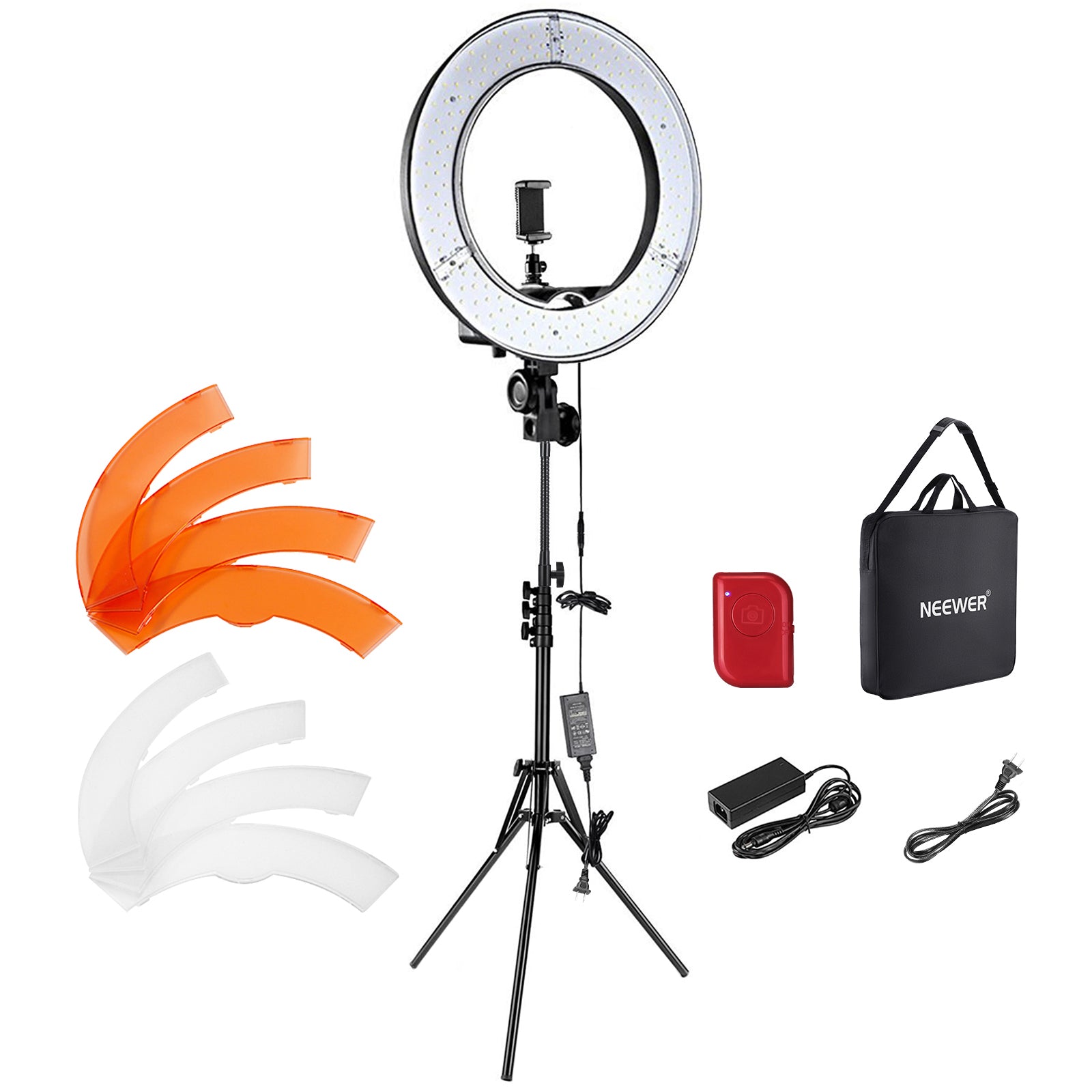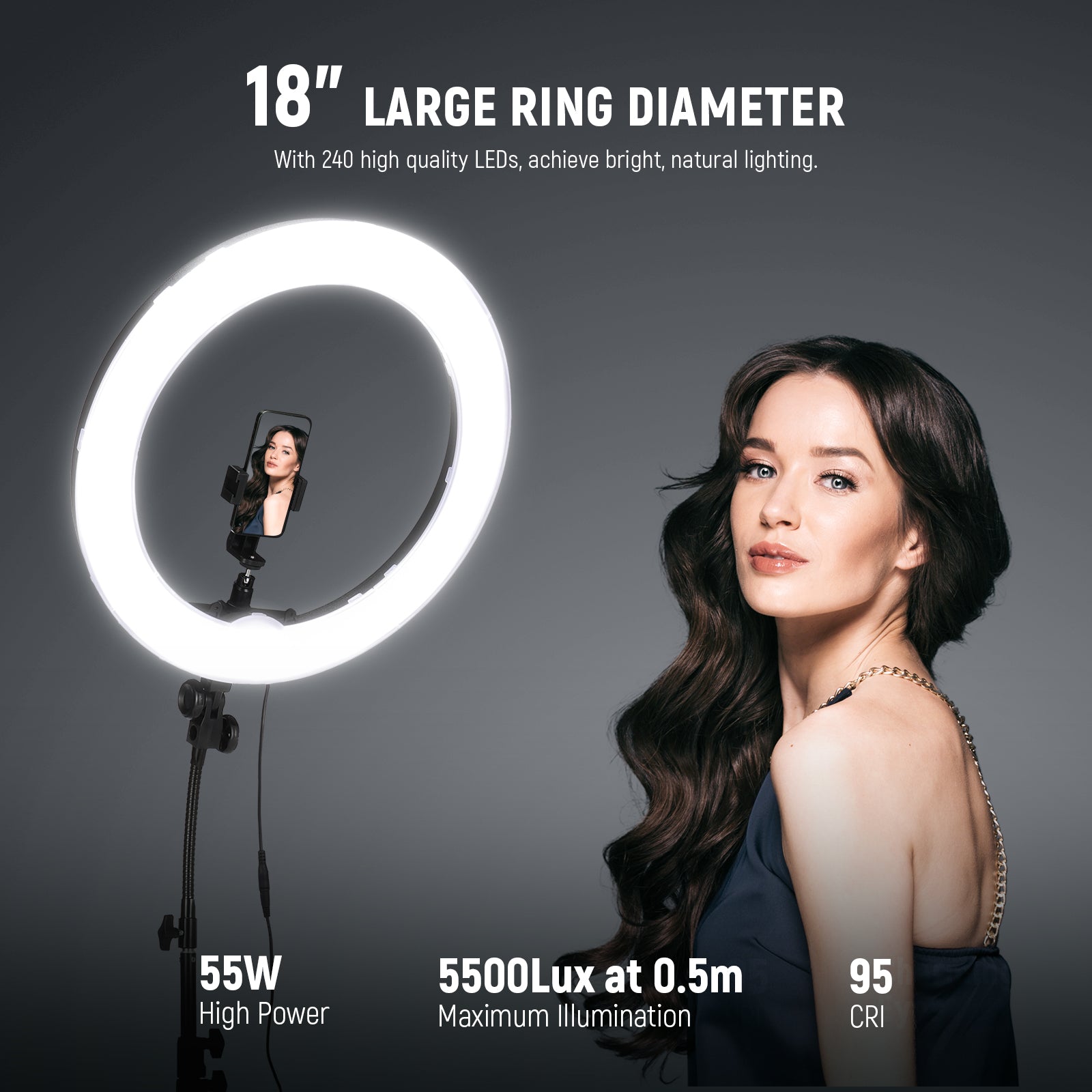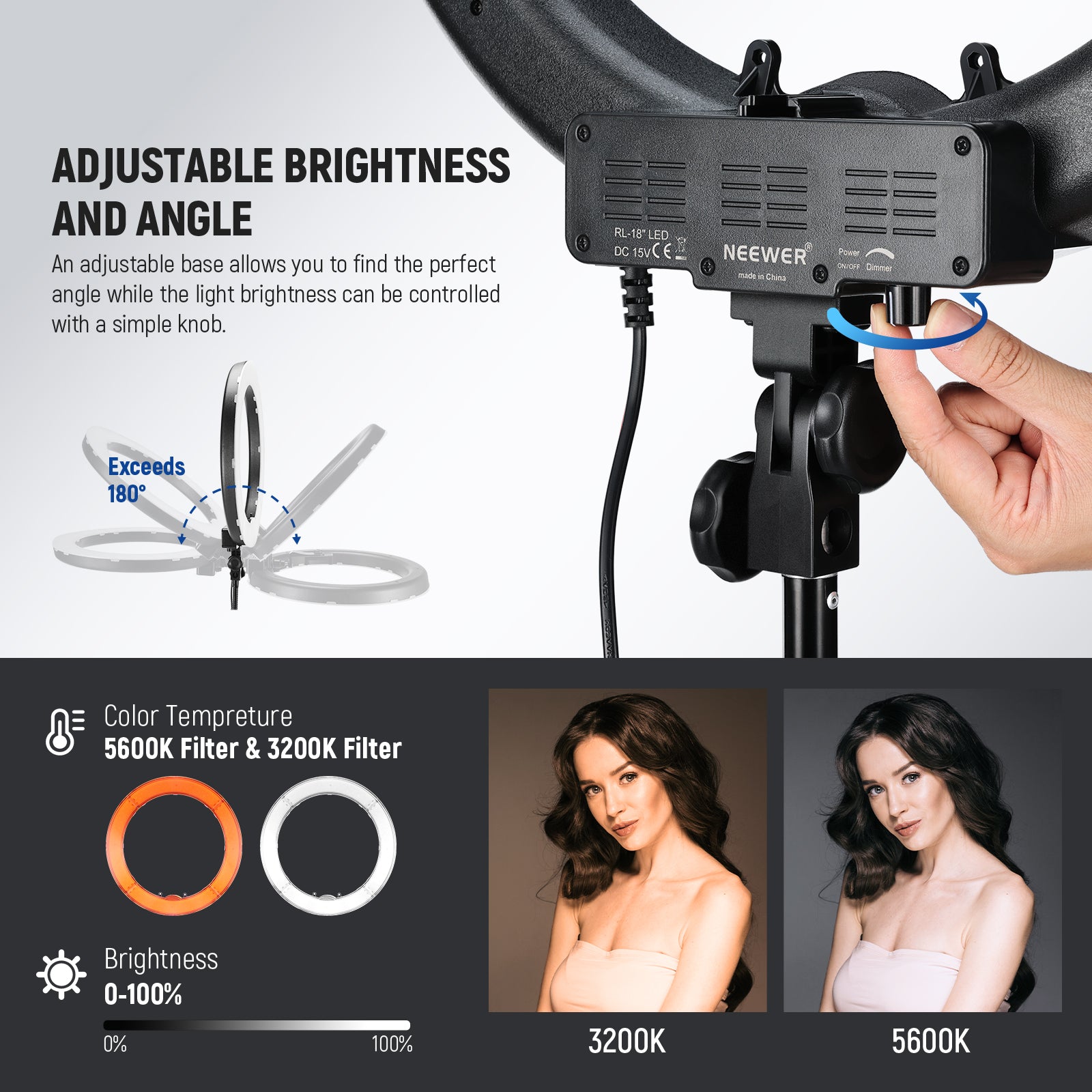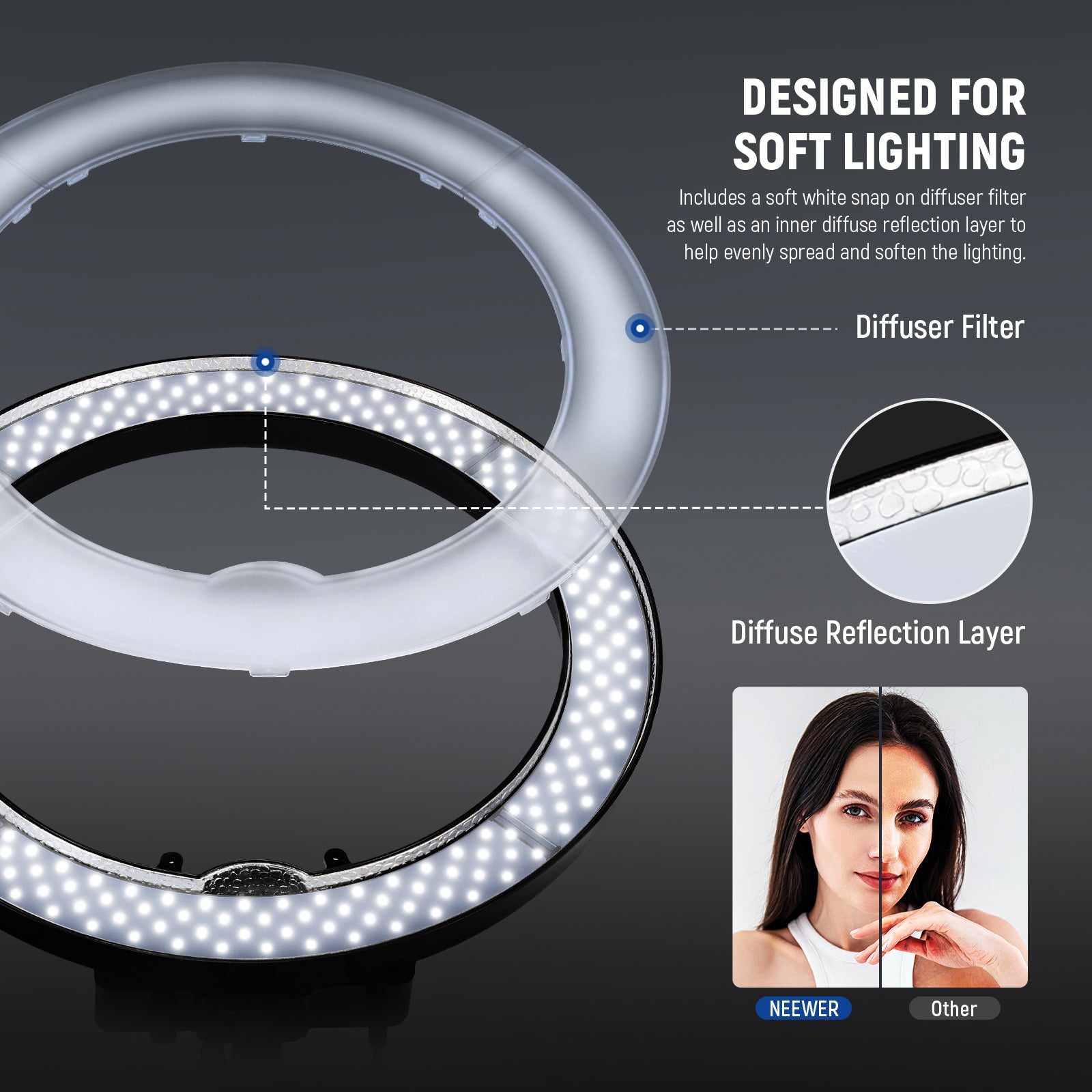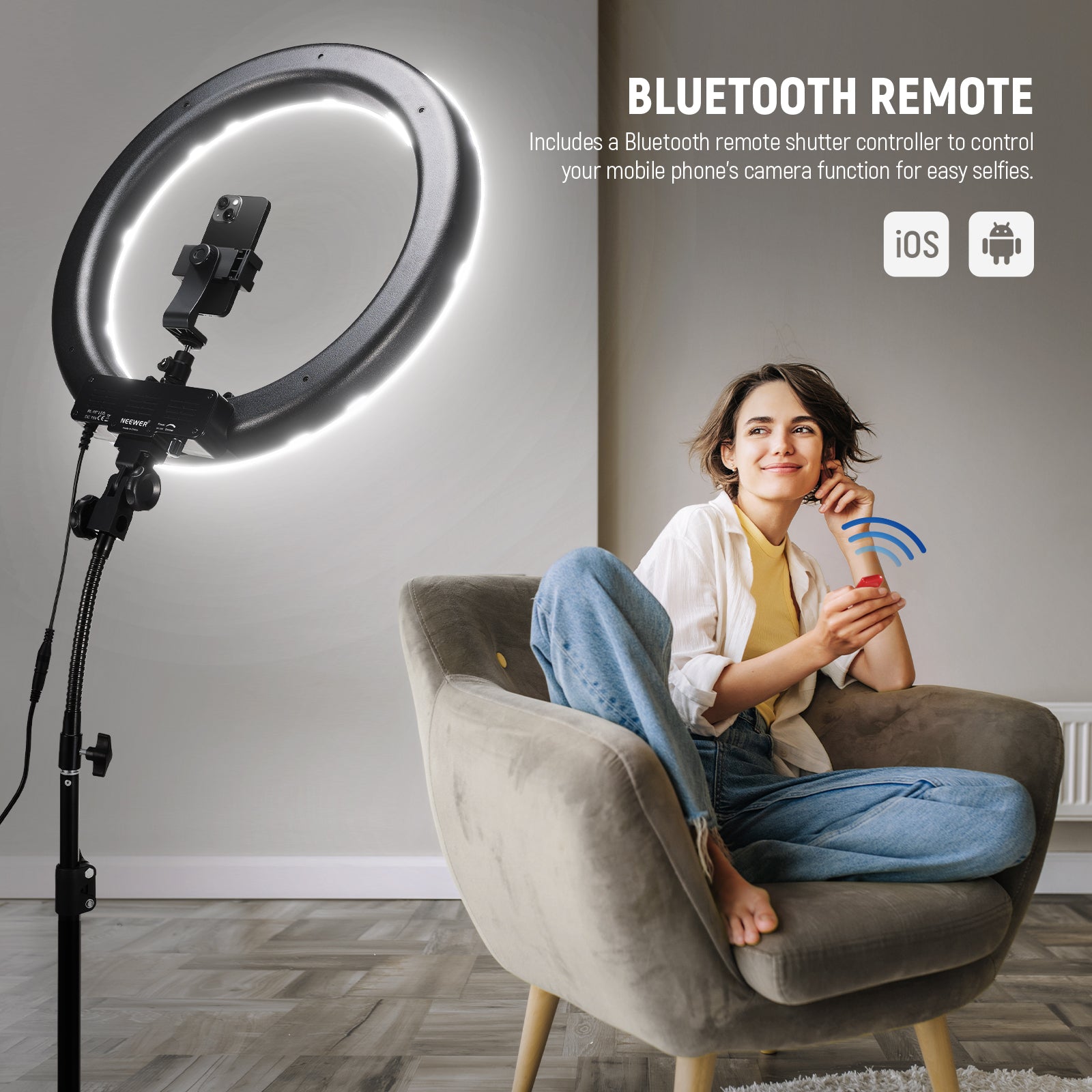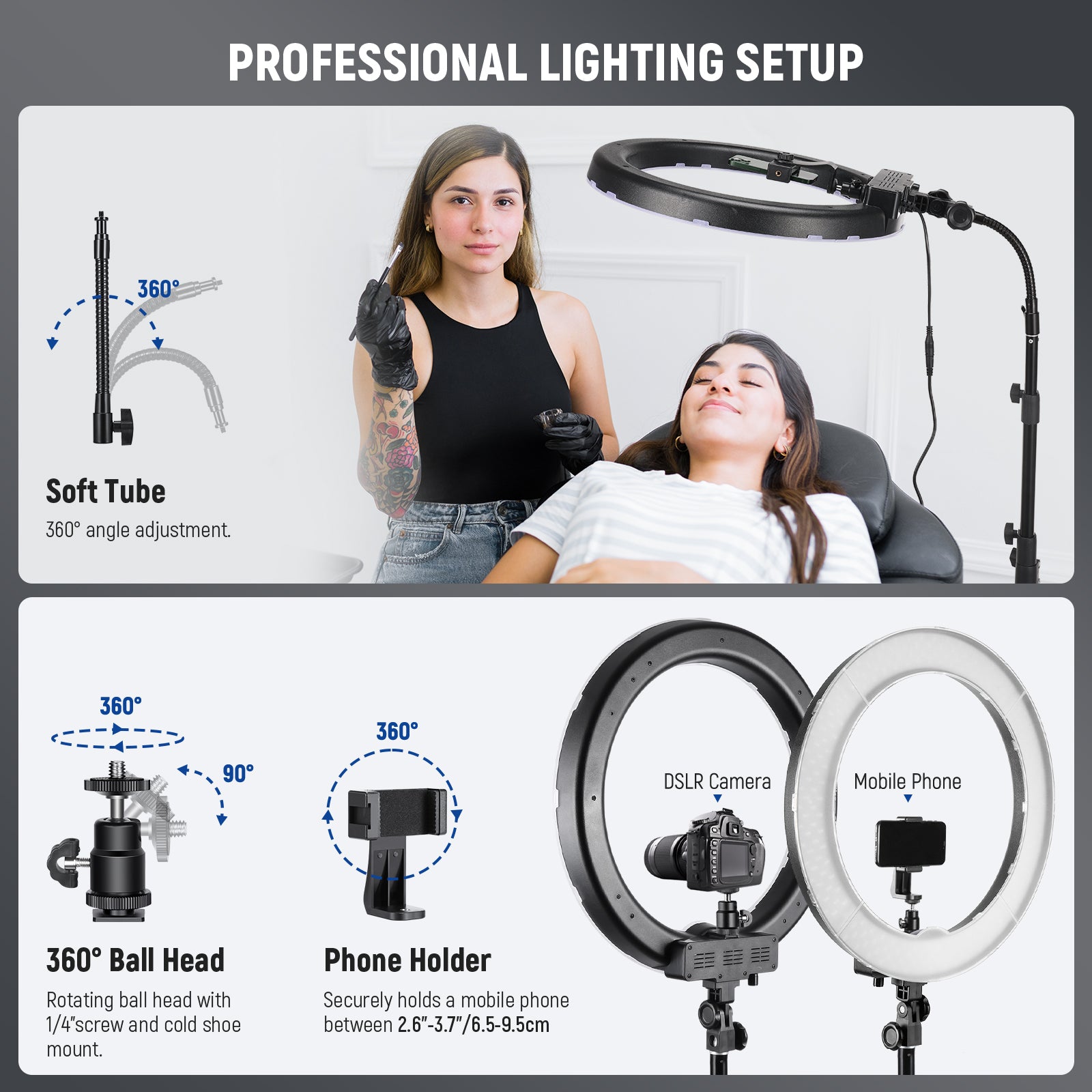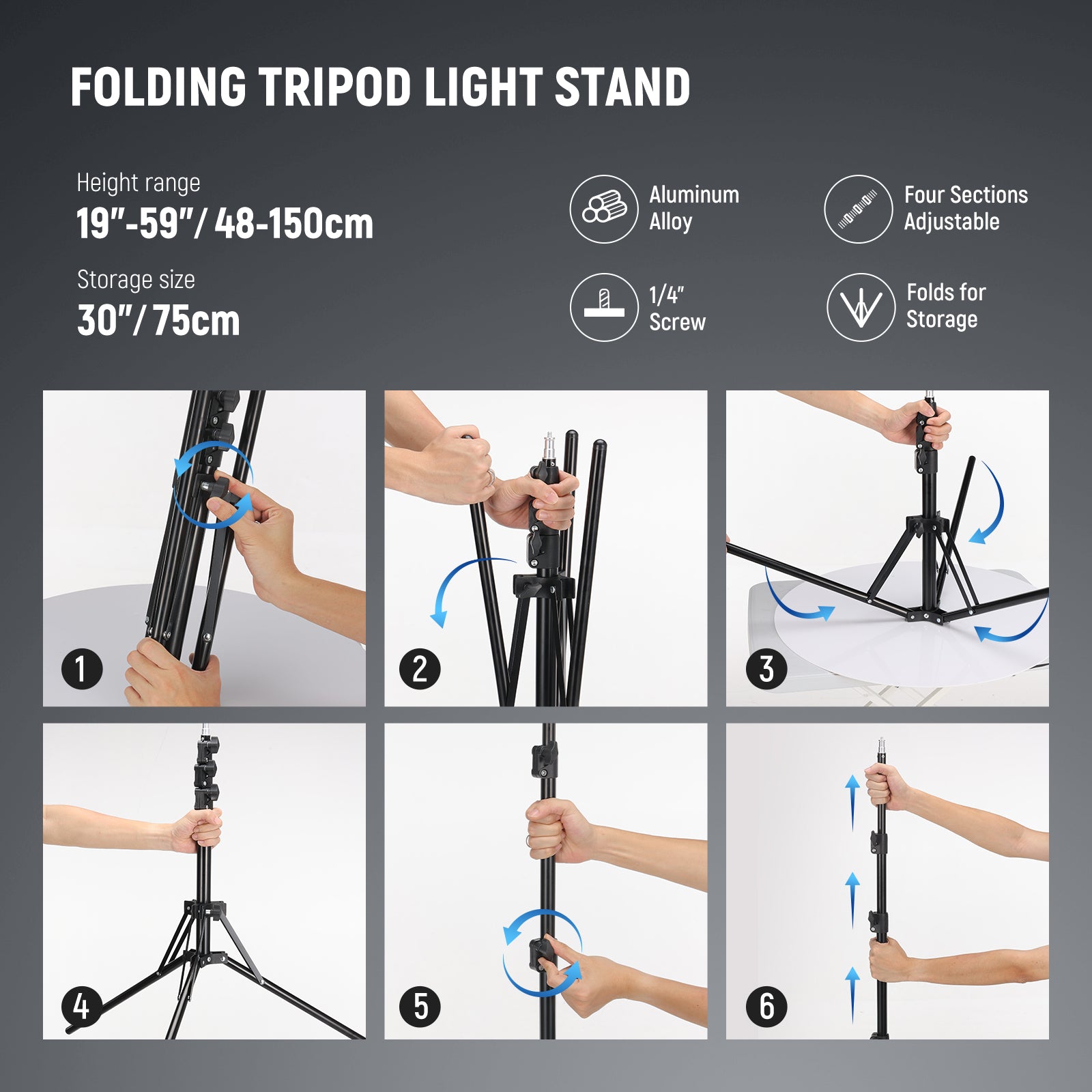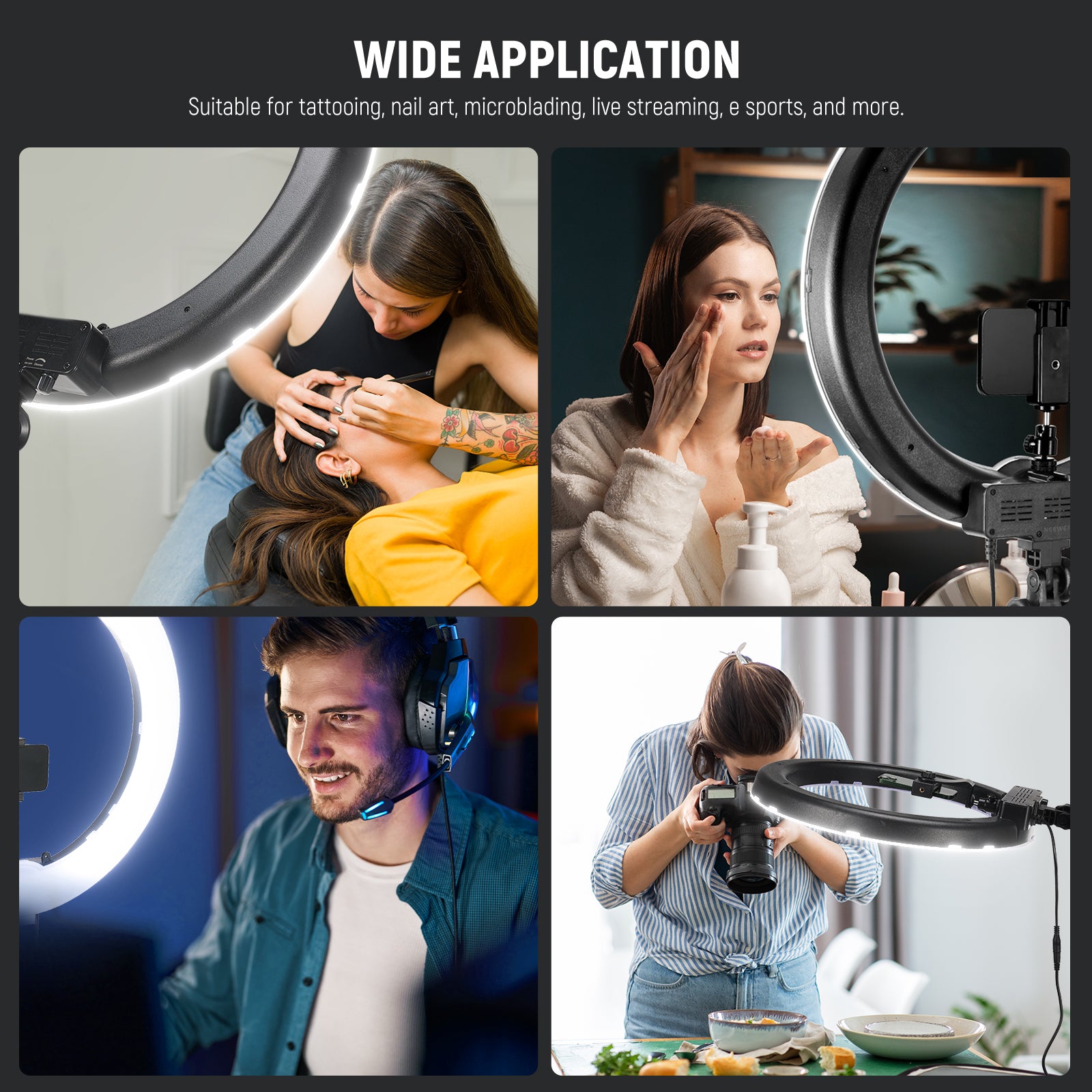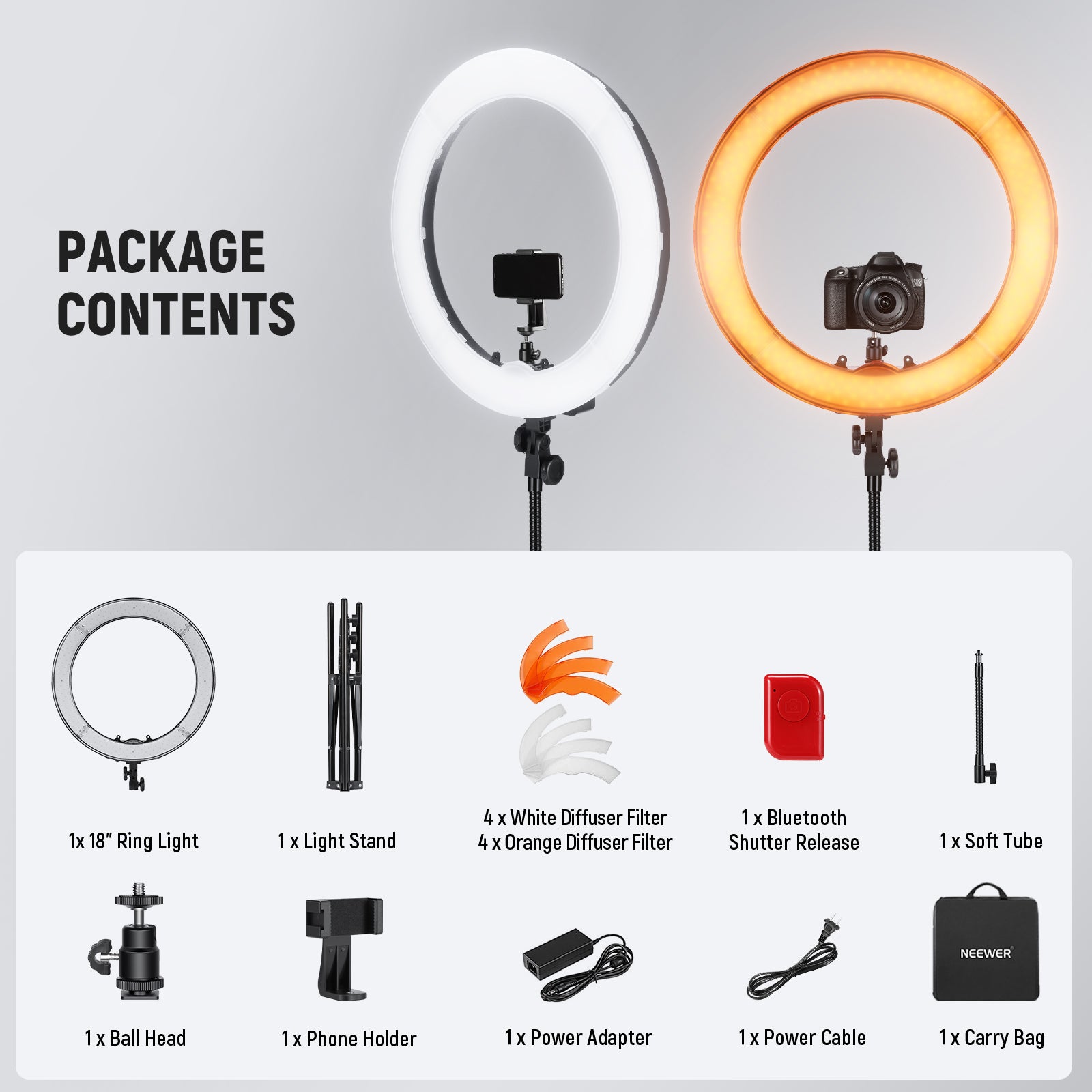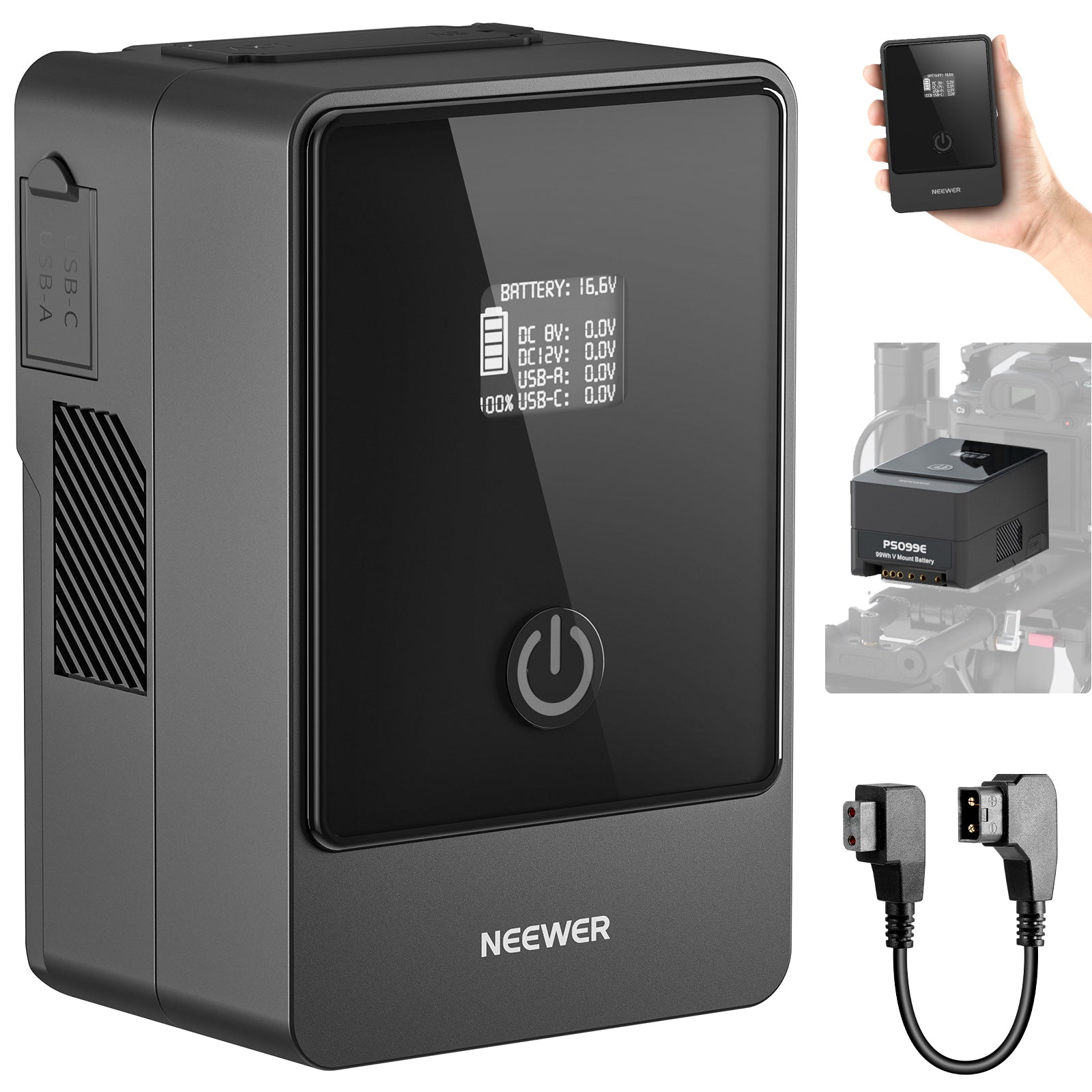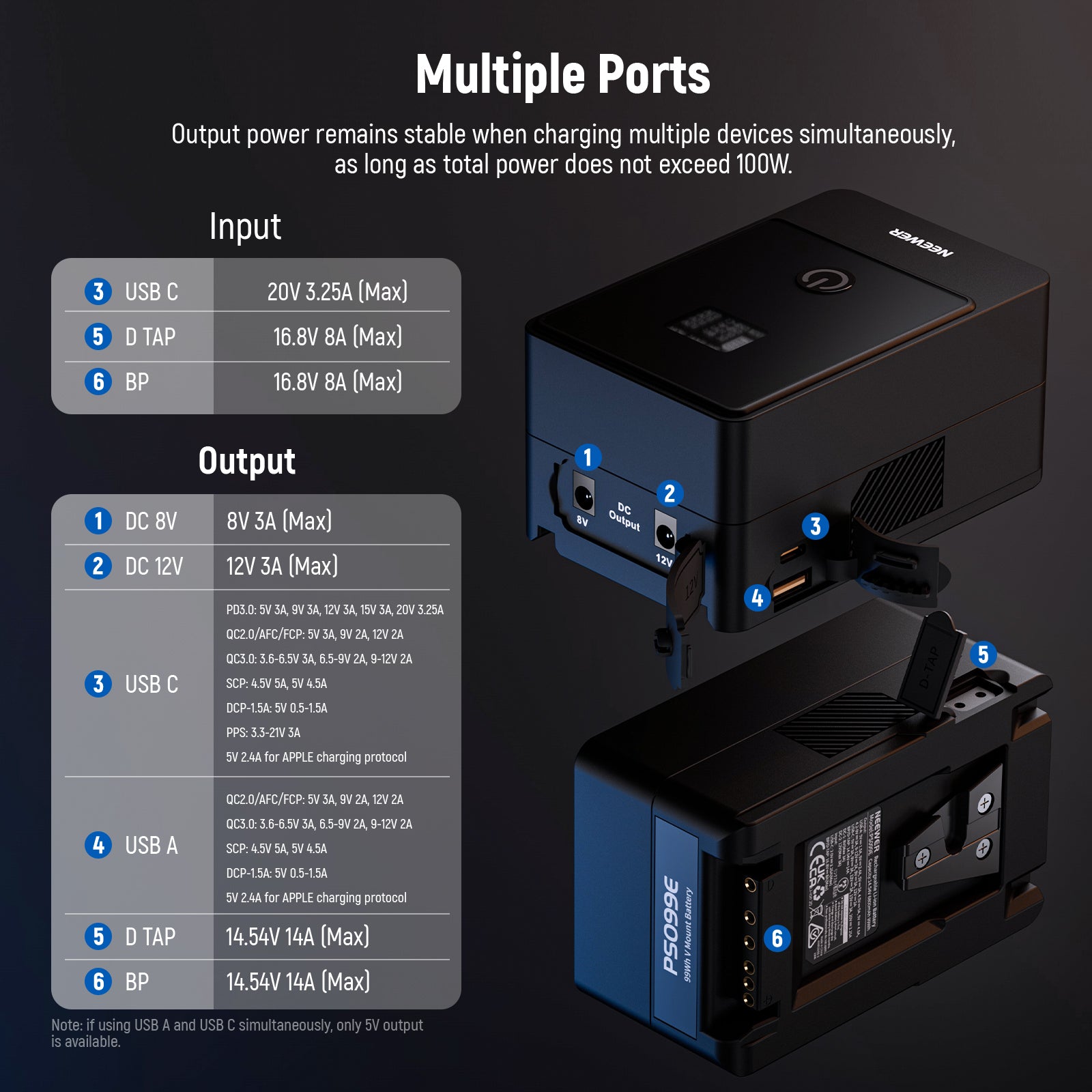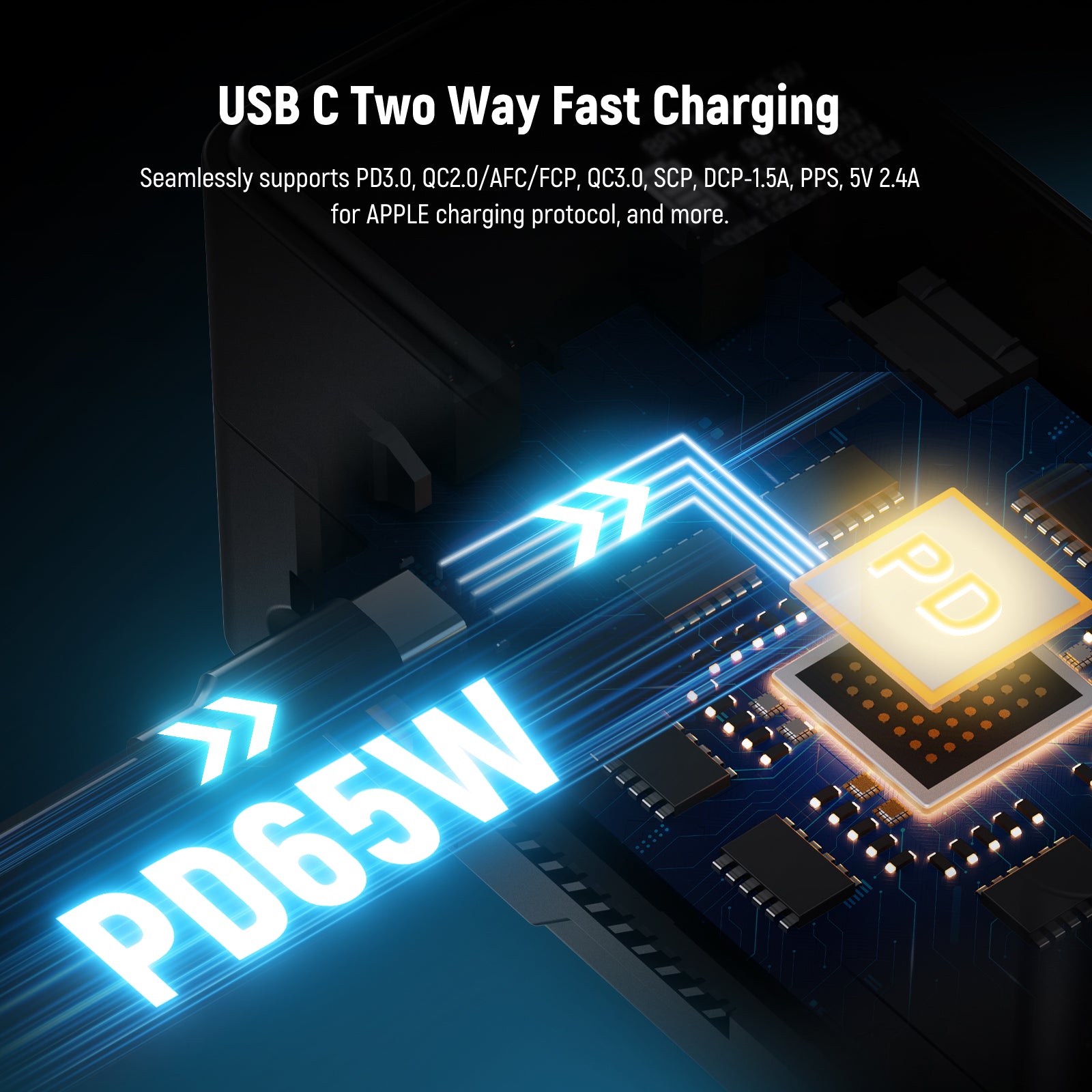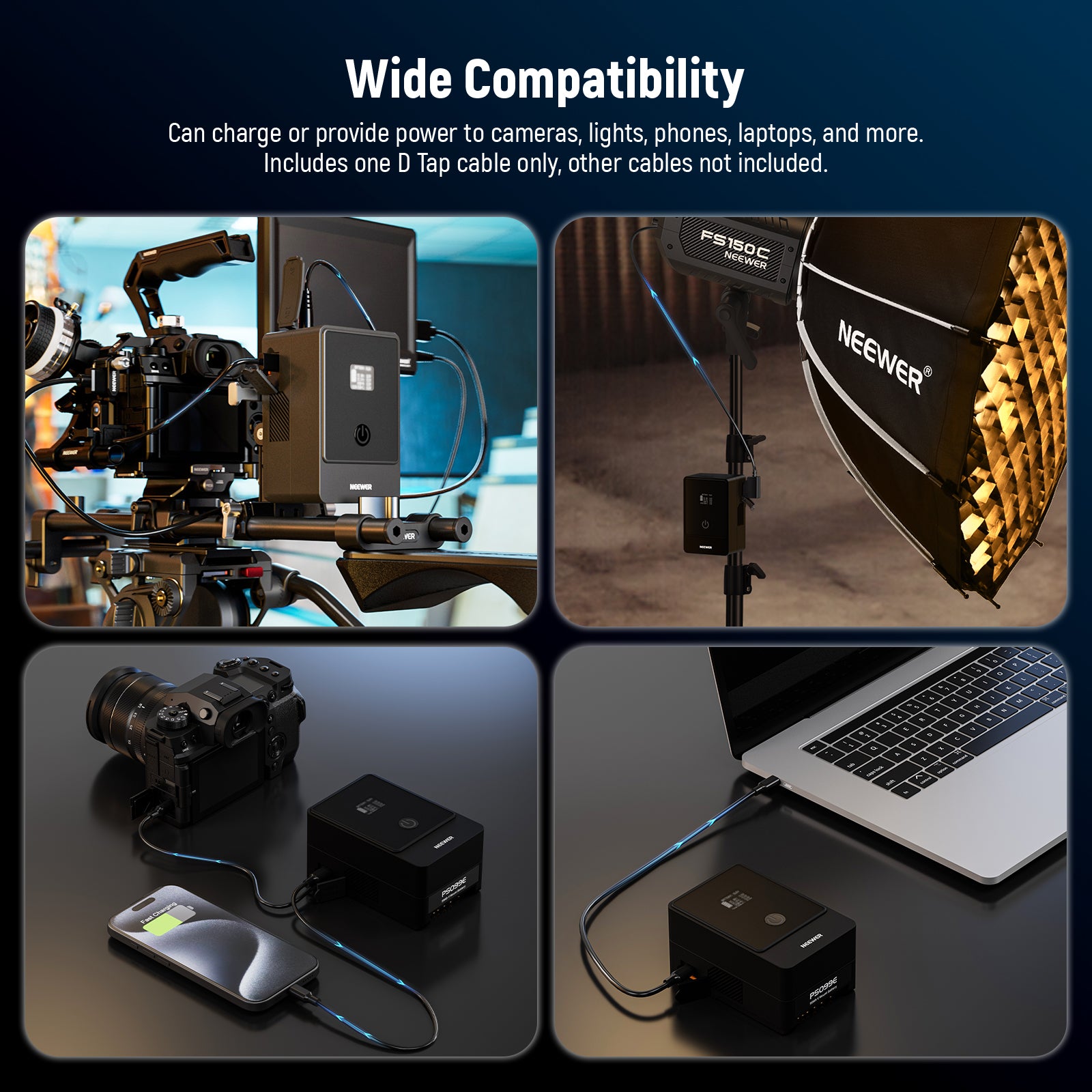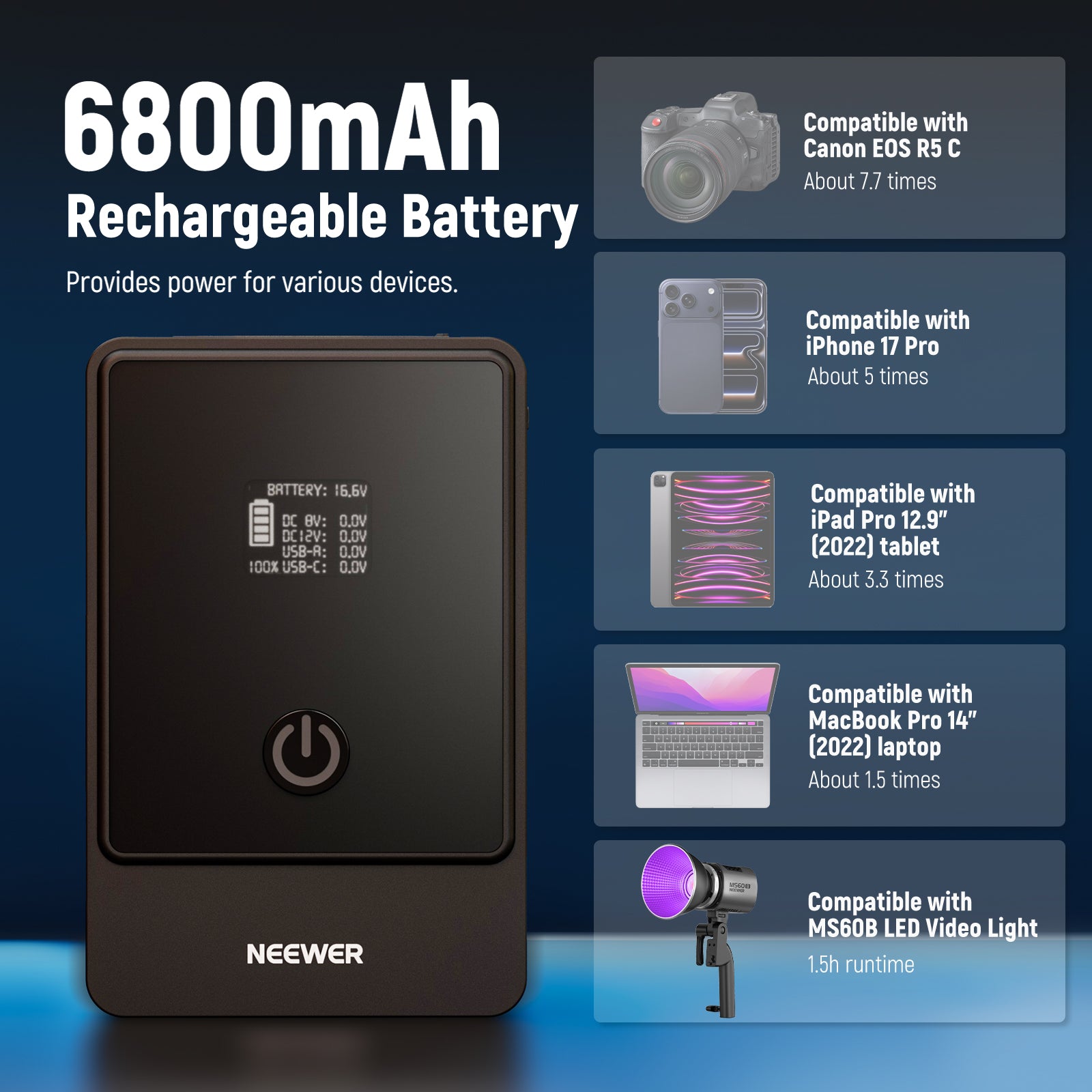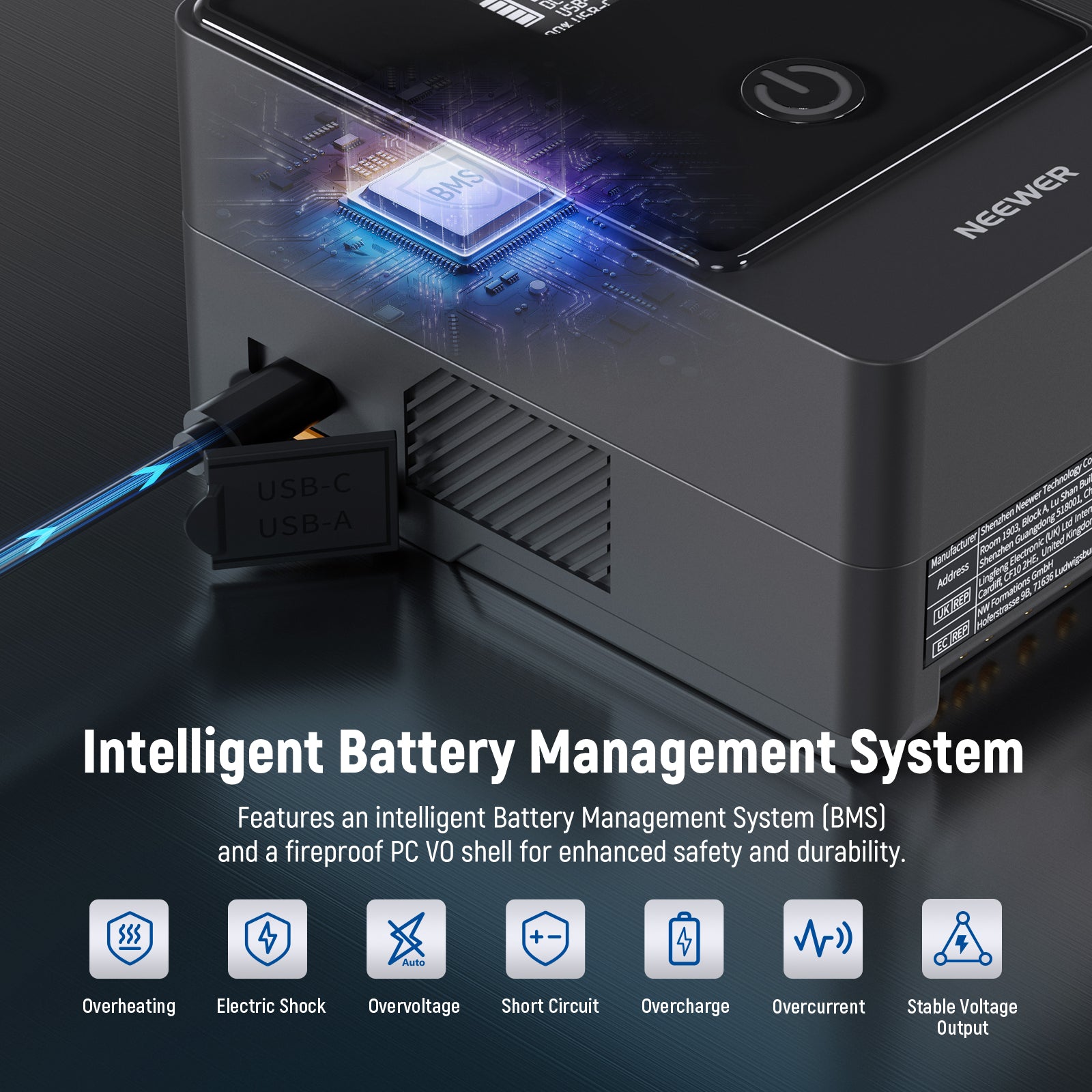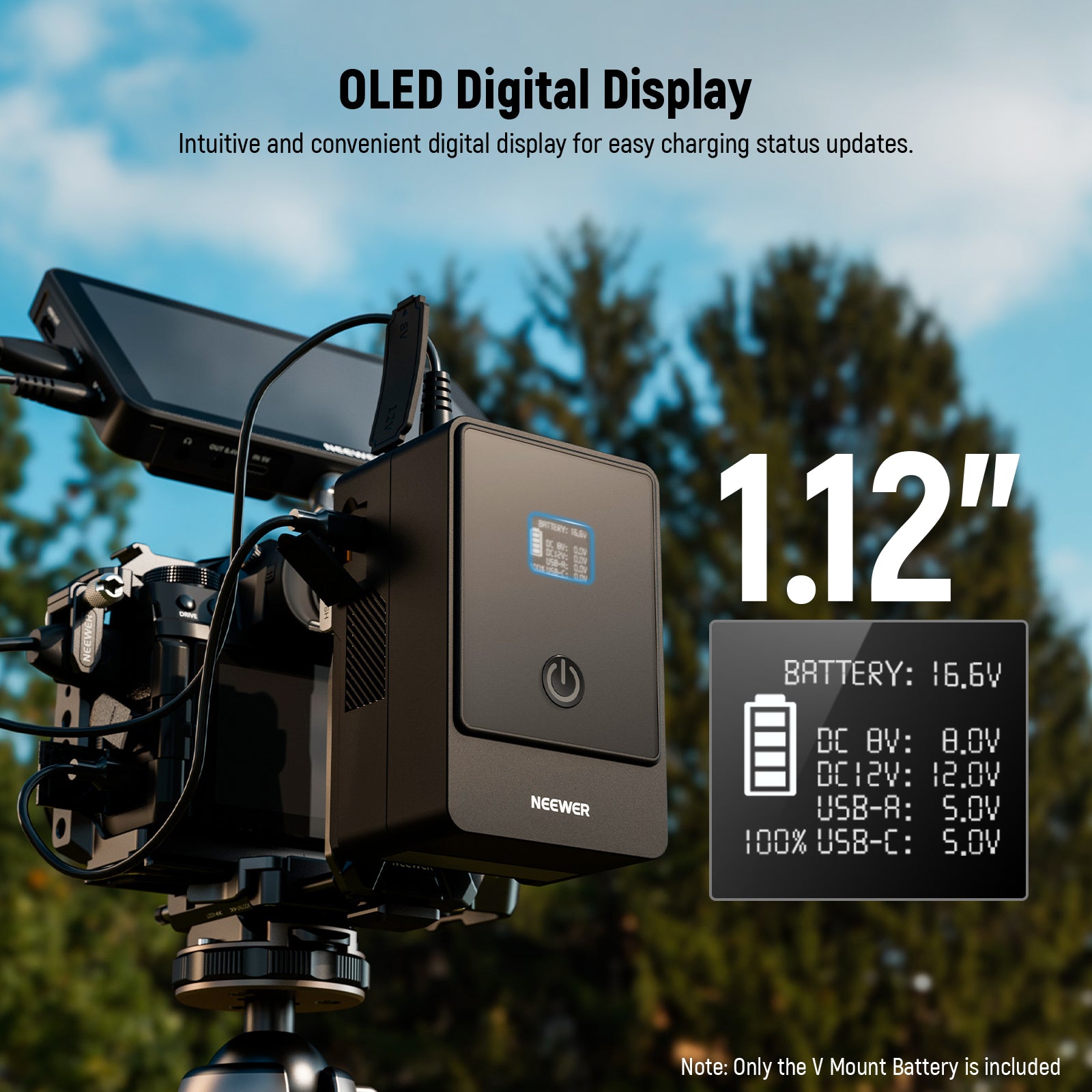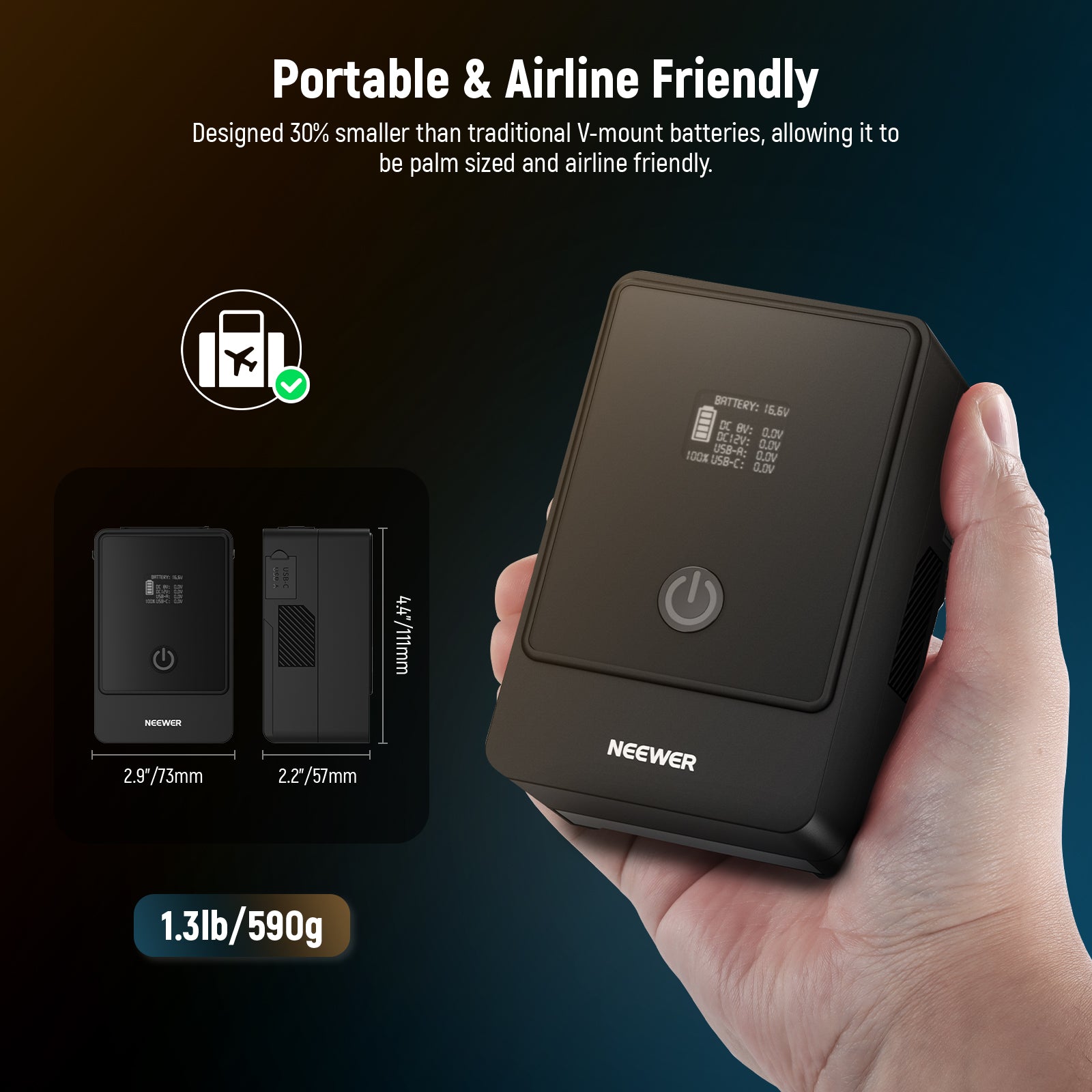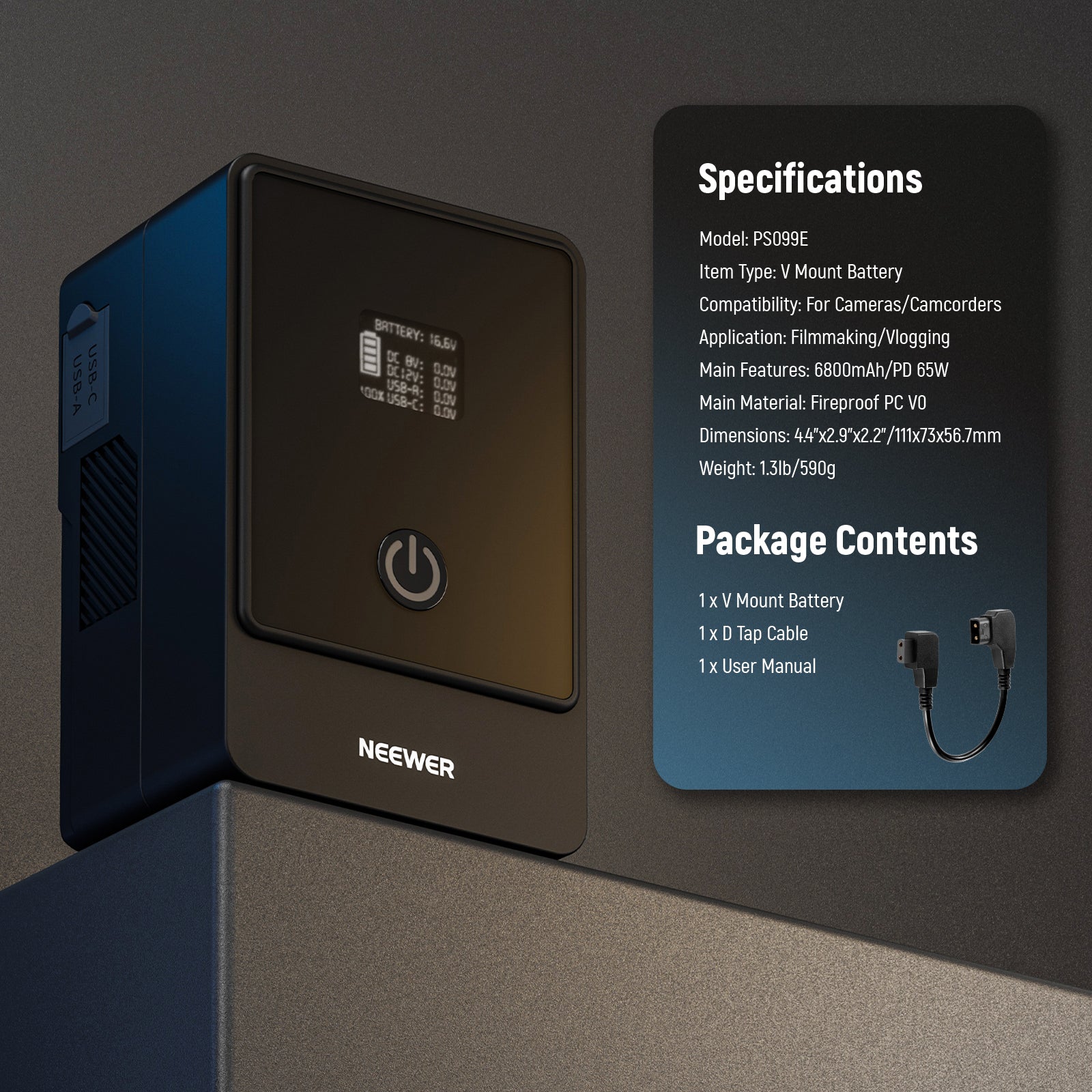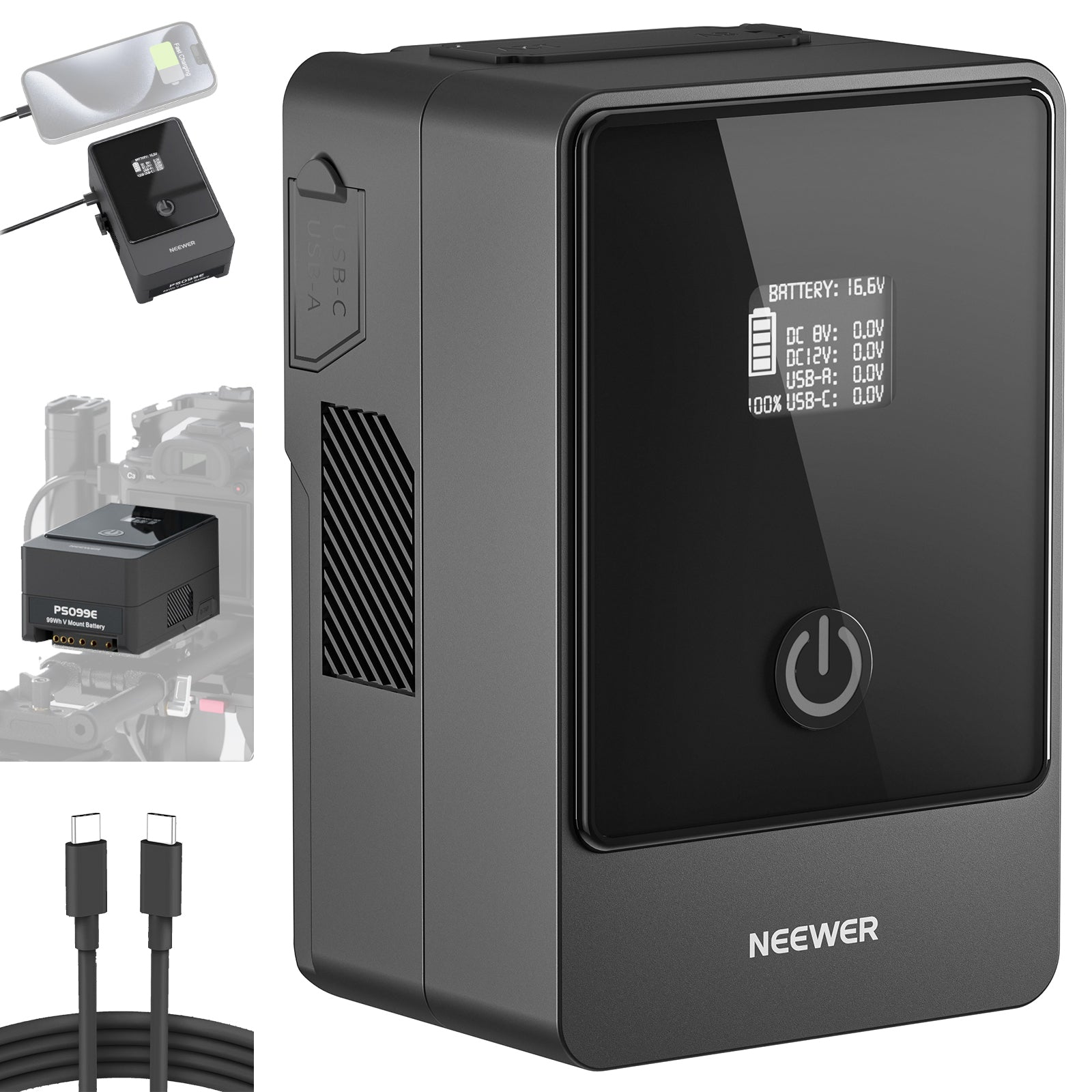Table of Contents
Bi-Color LED Light is a photographic fill light device with an adjustable color temperature that precisely matches the ambient light and helps creators, photographers, and filmmakers shape the ideal light atmosphere. Bi-Color LED lights can be used in portrait photography, film and video shoots, live streaming scenarios, and more. This blog introduces you to everything you've ever wanted to know, so feel free to read on.
Bi-Color Light Meaning: What Are Bi-Color LED Lights

Bi-Color LED lights are professional lighting tools that allow photographers and videographers to adjust the color temperature of the light between two preset ranges—typically from 3200K (tungsten, warm) to 5600K (daylight, cool). Unlike single-color LEDs, which emit only one fixed color temperature, Bi-Color LEDs contain two sets of diodes—one warm and one cool—allowing you to blend them for precise control over the warmth or coolness of the light. This feature is particularly useful when shooting in mixed-lighting environments or when you want to create a specific mood or match ambient light. Bi-Color LEDs eliminate the need for external gels and make on-the-fly adjustments simple and efficient, making them a versatile and time-saving option for both studio and location work.
Benefits of Bi-Color LED Lights

1. Adjustable Color Temperature
The ability to smoothly shift between warm (tungsten) and cool (daylight) light of Bi-Color LED Lights allows you to match different ambient lighting conditions or create specific moods without changing gels or filters.
2. Consistent Light Quality
High-quality Bi-Color LED lights offer stable, flicker-free output with high CRI values, ensuring accurate color rendering for natural skin tones and vivid colors.
3. Creative Control
With Bi-Color LED Lights, photographers and filmmakers can fine-tune the light’s warmth or coolness to enhance storytelling and mood without relying solely on post-processing.
4. Time-Saving Flexibility & Versatility
On-the-fly color temperature adjustments save time on set by eliminating the need to swap physical gels, reducing prep and post-production work. Suitable for a wide range of shooting scenarios—from indoor interviews and portraits to outdoor scenes—making them a one-light solution for many environments.
Bi-Color vs. Daylight LED: Which Is Better
|
Feature |
Bi-Color LED |
Daylight LED |
|
Color Temperature |
Adjustable (typically 3200K–5600K) |
Fixed (usually 5600K) |
|
Versatility |
High – adapts to various lighting environments |
Low – best in consistent, controlled settings |
|
Brightness Output |
Slightly lower (power split between two LED types) |
Higher output at fixed color temperature |
|
Mood/Look Control |
Easy to create warm or cool tones |
Limited to daylight look |
|
Best For |
Run-and-gun shoots, mixed lighting, interviews |
Studio work, product photography |
|
Setup Convenience |
Eliminates need for gels |
Simpler controls, fewer settings |
If you need flexibility and often shoot in different lighting conditions (for example, switching between indoor tungsten lights and outdoor daylight), then Bi-Color LED lights are better. They let you quickly adjust the color temperature without using gels, which saves time and gives you more creative control.
However, if you're working in a controlled studio environment where lighting stays the same, or if you need the maximum light output, then Daylight LEDs are better. They're usually brighter at the same power rating, simpler to operate, and often more affordable.
How to Use Bi-Color LED Lights

- Pair Bi-Color LED lights with RGB lights for even finer color grading on set, using the Bi-Color as the key light and RGB for subtle accents or background separation.
- Use subtle color temperature shifts (5-10% adjustments) to psychologically influence the viewer’s mood without making the lighting obvious. For example, a barely noticeable warm tint can evoke comfort, while a slightly cool tone can add tension.
- Create mixed lighting setups with multiple Bi-Color units set to different color temperatures to simulate natural light falloff or window light transitions. This adds realism and depth, especially in narrative or cinematic work.
- Use the color temperature dial as a creative storytelling tool—slowly shift the color temperature over time in a time-lapse or scene to reflect changes in mood or time of day.
- Control the flicker rate and PWM settings (if available) on high-end Bi-Color LED lights to avoid rolling shutter artifacts when shooting with high frame rates or slow shutter speeds.
- When shooting skin tones, adjust the color temperature slightly towards warmer values, but compensate with fill lights or gels on other sources to maintain natural skin rendering without looking too orange.
- Experiment with creative color temperature layering by setting background Bi-Color LED lights warmer and key lights cooler (or vice versa) to separate subject and background visually without heavy post production.
FAQs About Bi-Color LED Lights
Do I Really Need a Bi-Color LED Light?

Bi-Color LED Lights are not essential; their value depends entirely on your shooting style, environment, and workflow. Bi-color LED lights may prove particularly helpful if your work frequently shifts between various lighting conditions or on-location shooting with no control of ambient light - giving quick control over color temperature that saves both filming time and post processing work for more natural-looking results.
Do I Always Need to Use a Diffuser With My Bi-Color LED Light?

No diffuser is always necessary when using Bi-Color LED Lights; its usage will depend on your desired effect and shooting environment. Bicolor LED lights usually emit very strong, direct lighting with strong shadows and high contrast; using a diffuser softens this harsh shadowing and creates more even lighting, especially good for portraits or interviews. On the other hand, using no diffuser may give clear, dramatic lighting with well-defined shadows for art or product photography; there are advantages to not using one! Sometimes harder light can add texture and depth to a subject.
Can I Power My Bi-Color LED Light With Batteries?

Yes, bi-color LED lights can often be battery-powered for maximum portability when shooting on location or in other situations where AC power may not be readily accessible. Battery-powered bi-color LEDs typically use V-mount or Gold-mount batteries, which offer long-lasting power that can quickly be swapped out on-the-fly whereas smaller or economy models may use proprietary or built-in rechargeable options; when purchasing such lights it may be wise to review product specs closely to identify whether battery support exists before making your investment decision.

